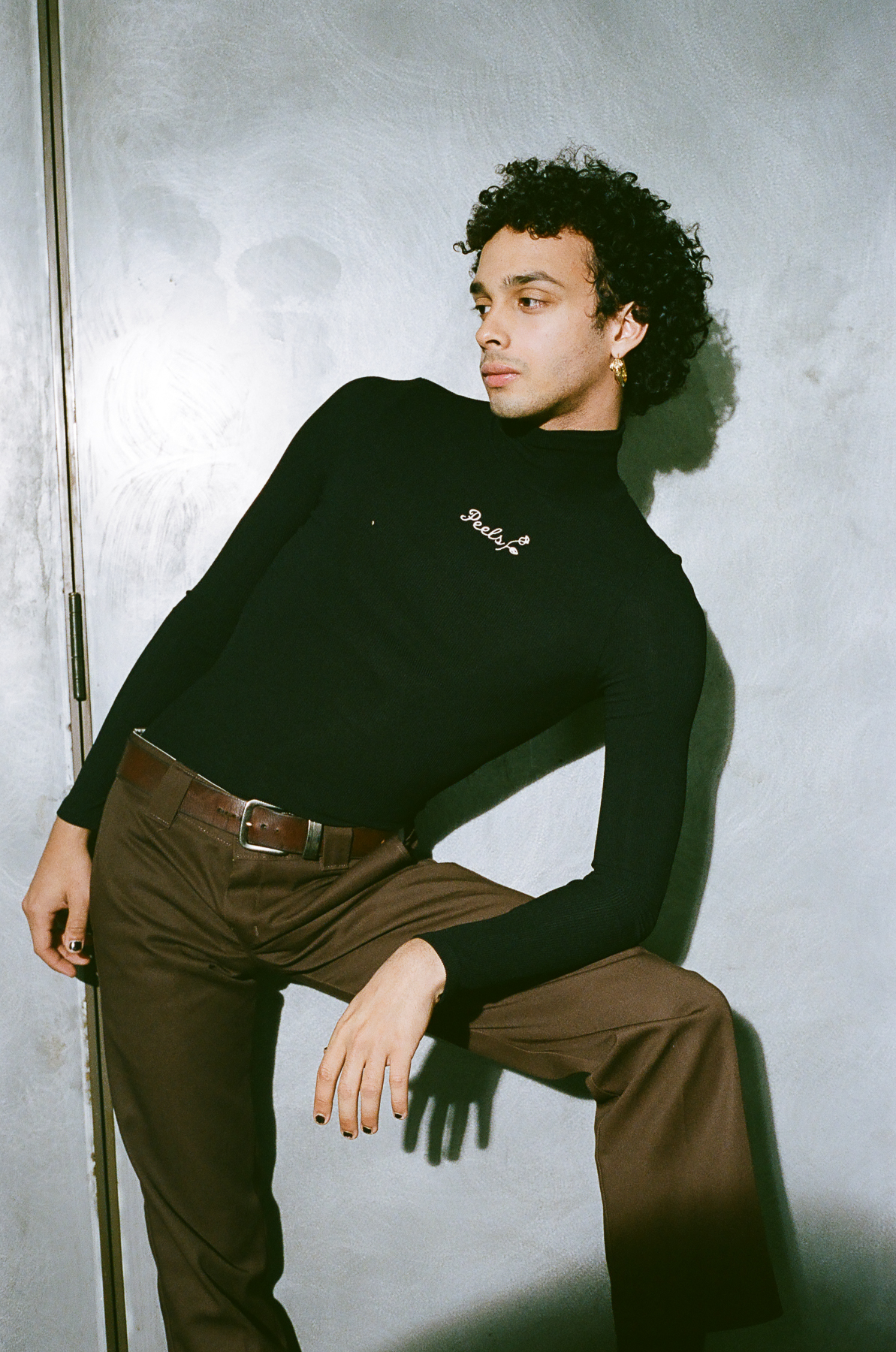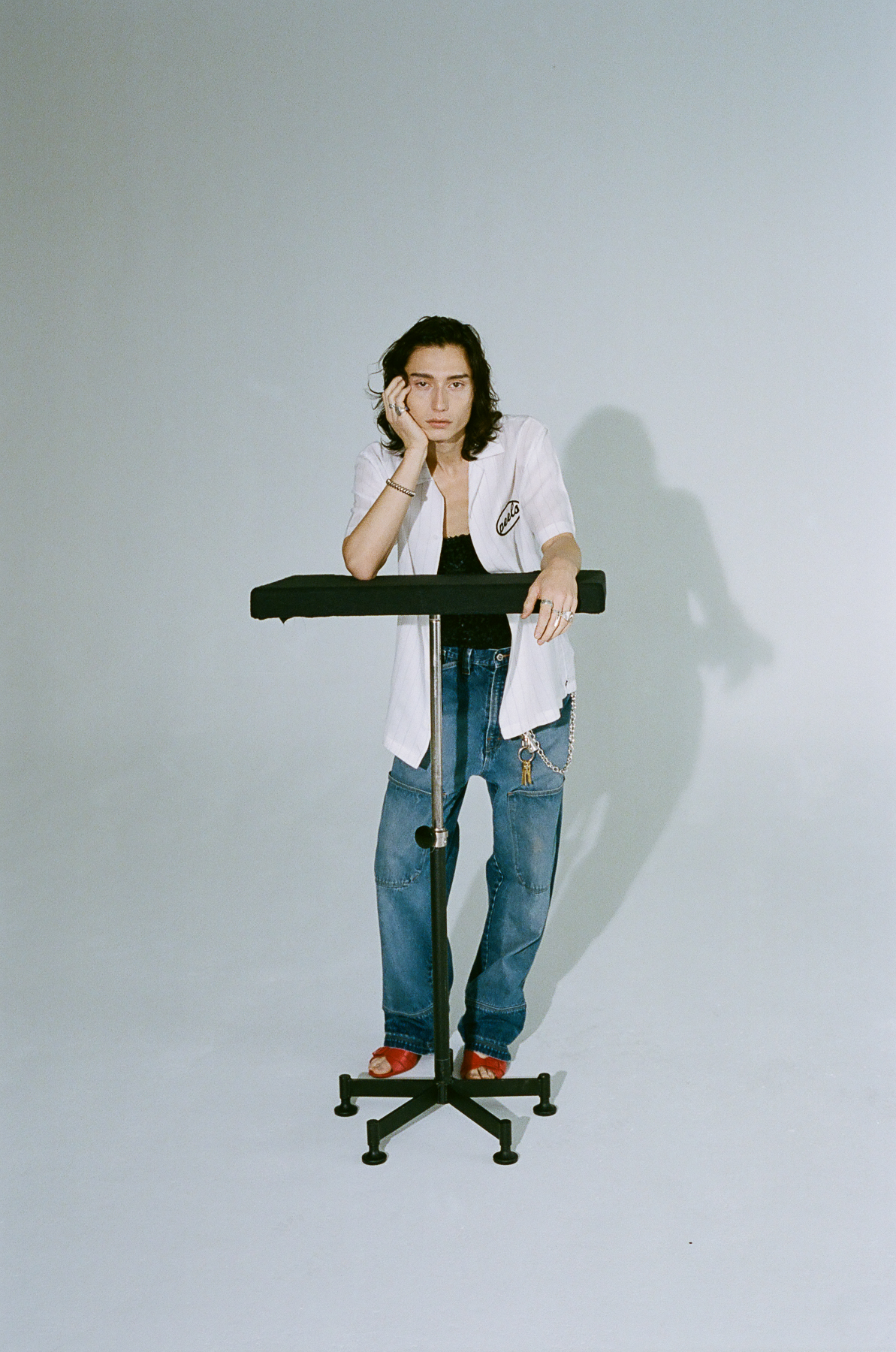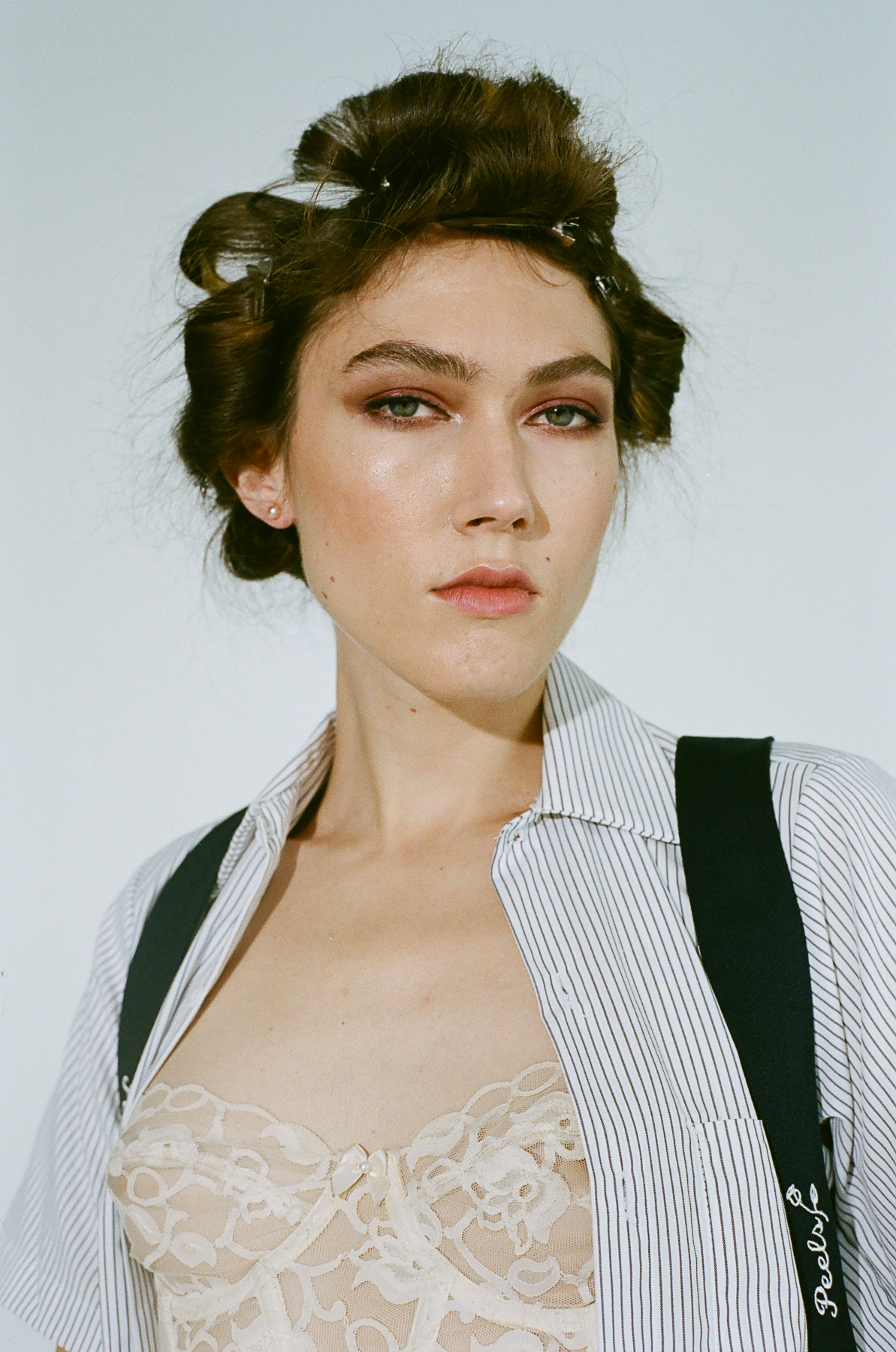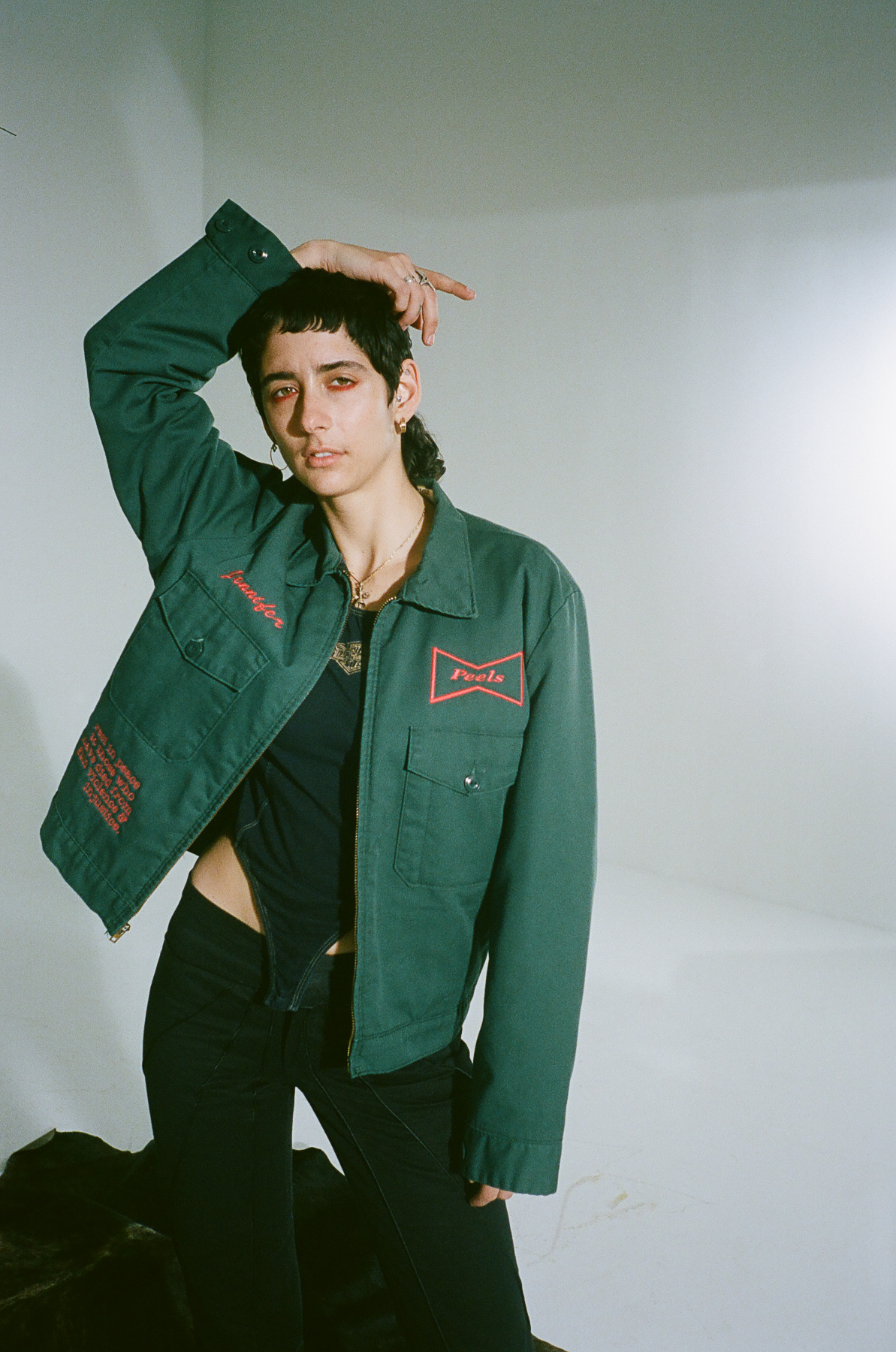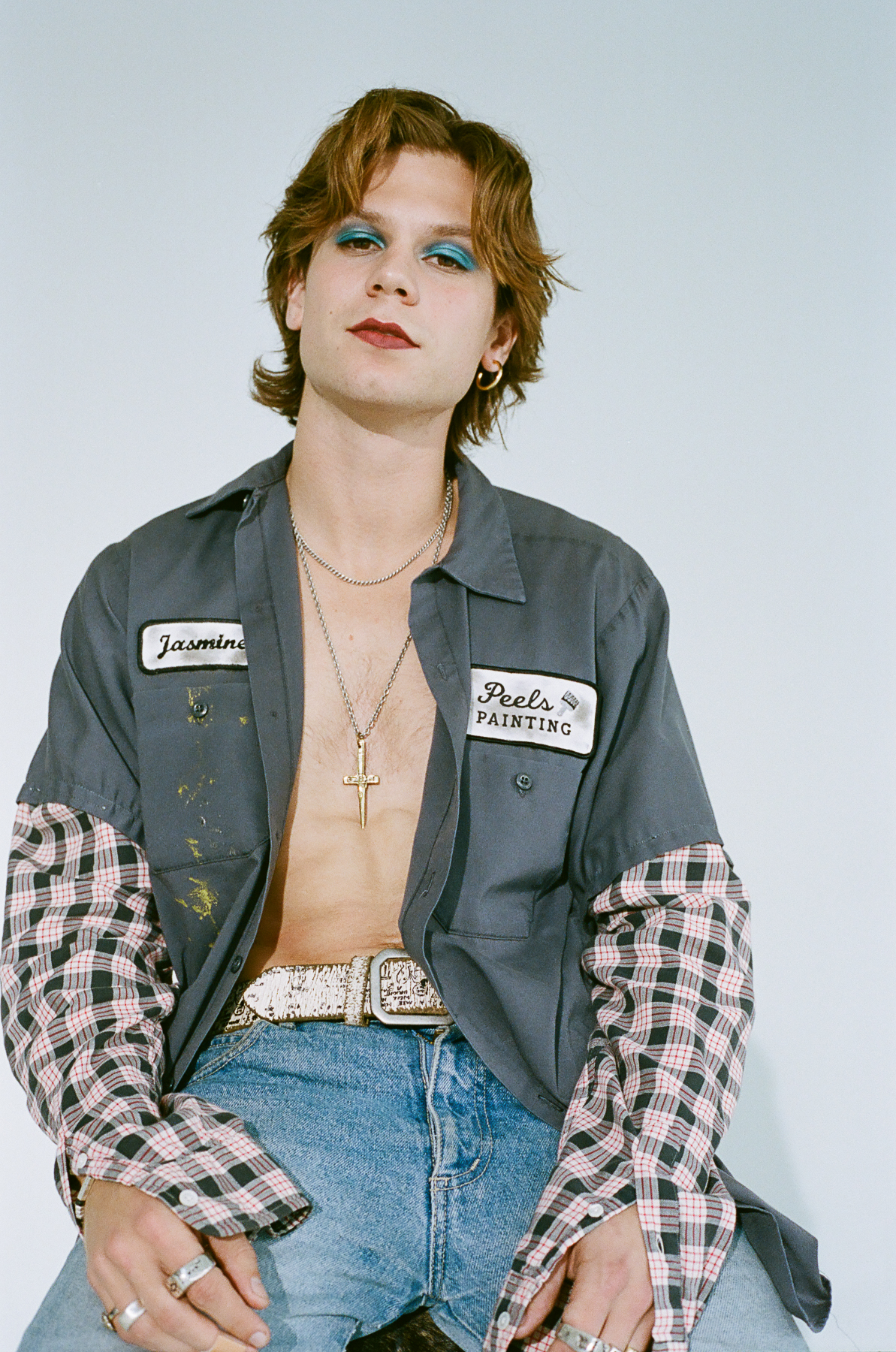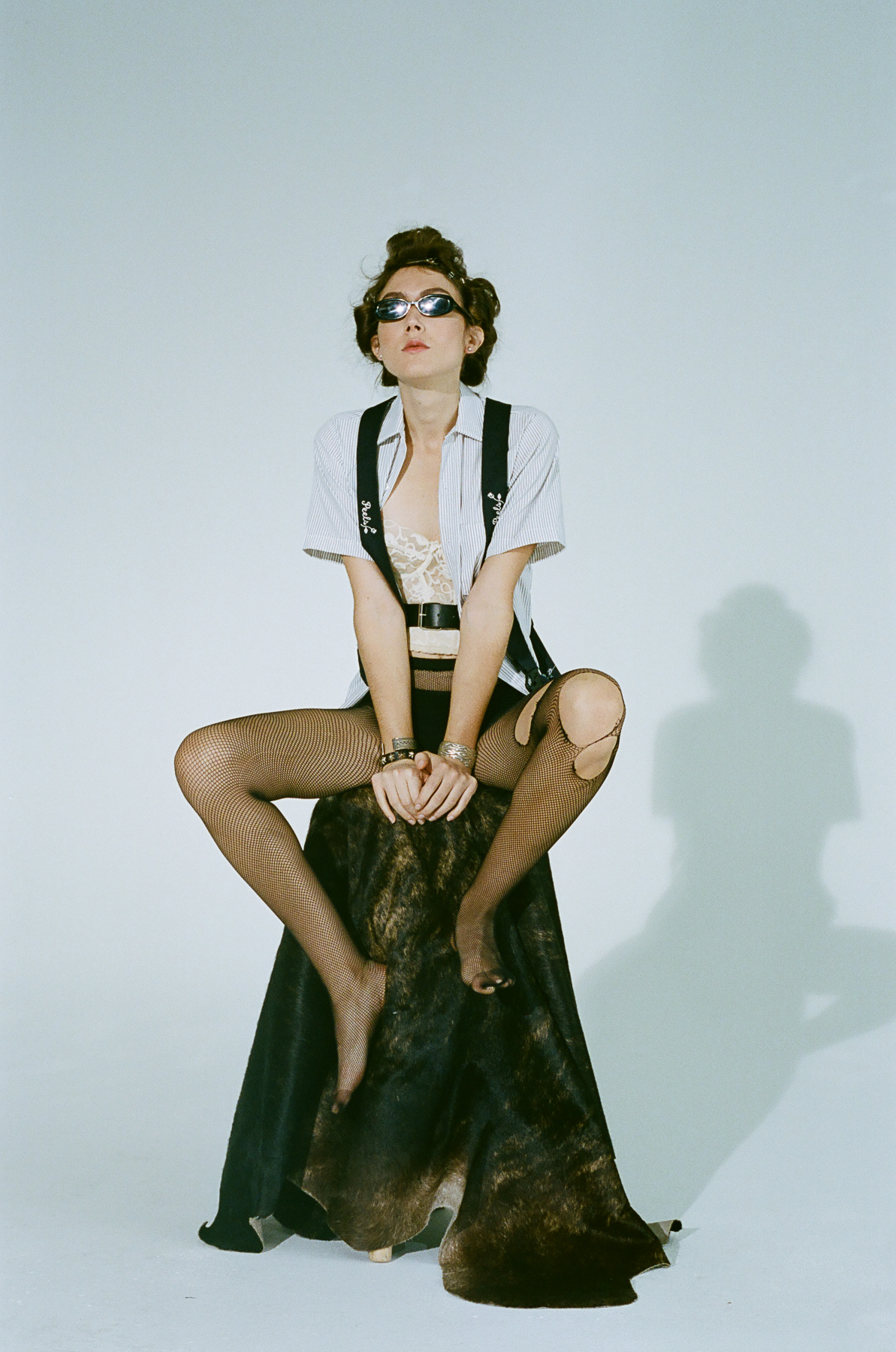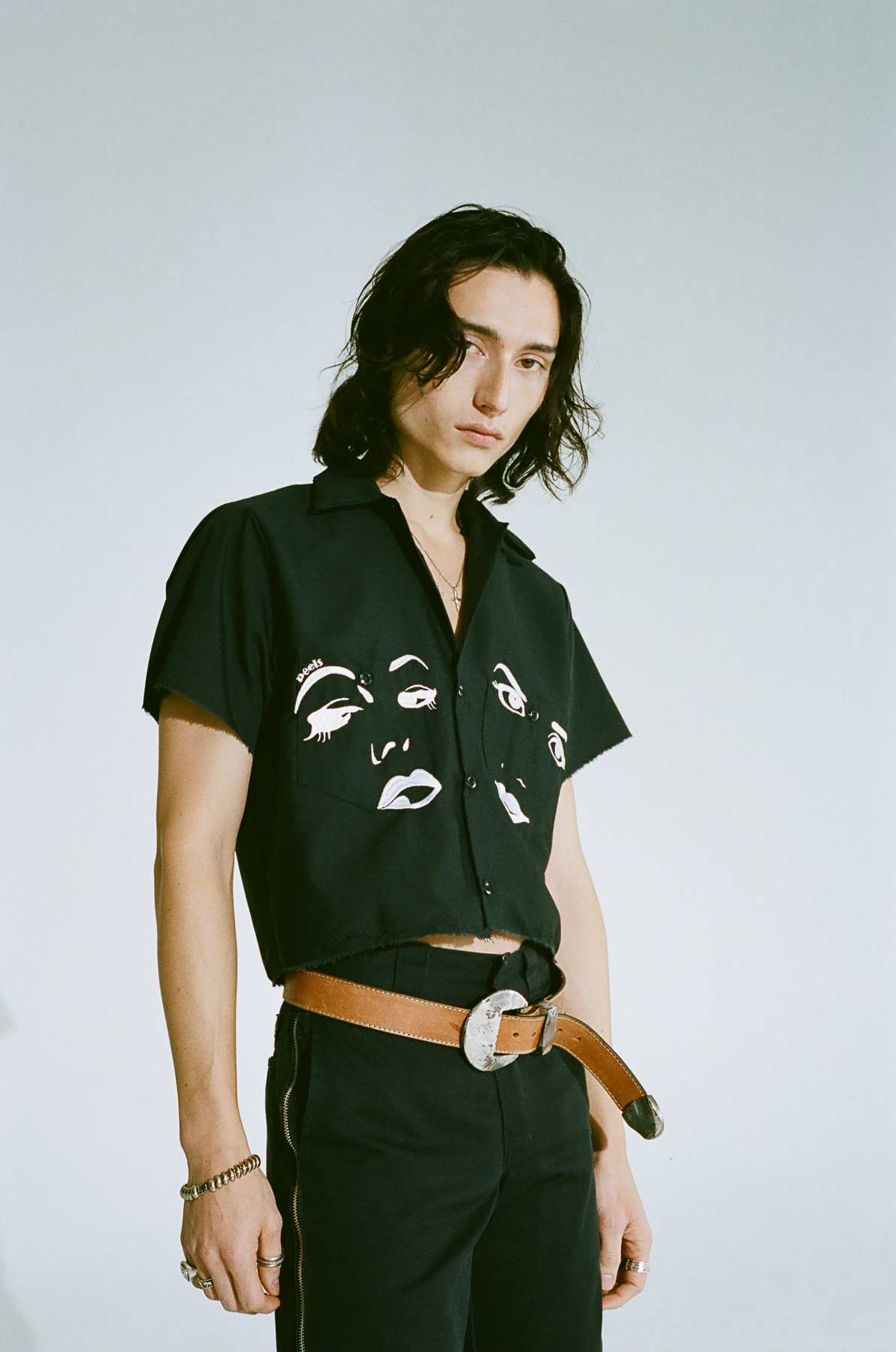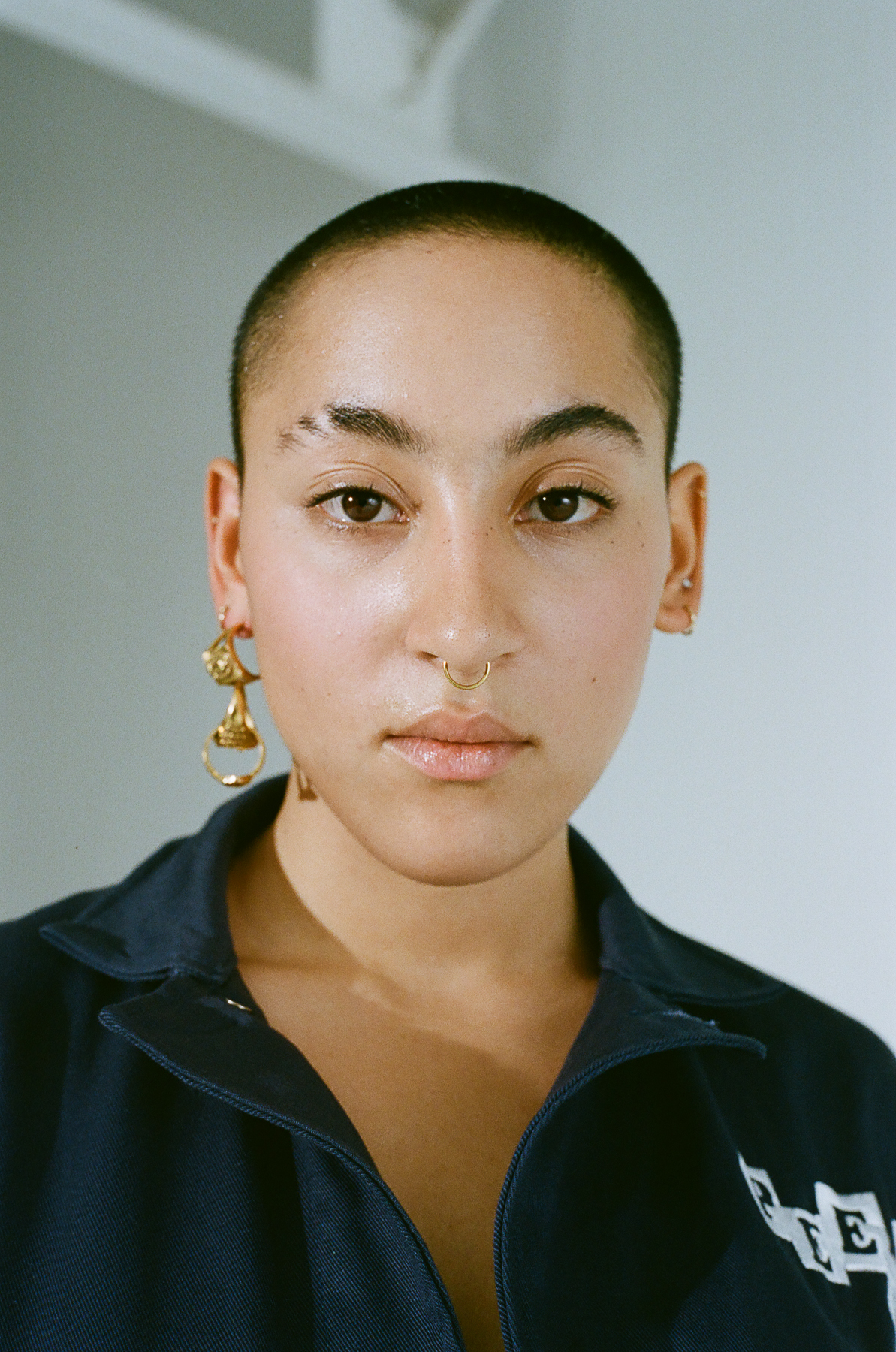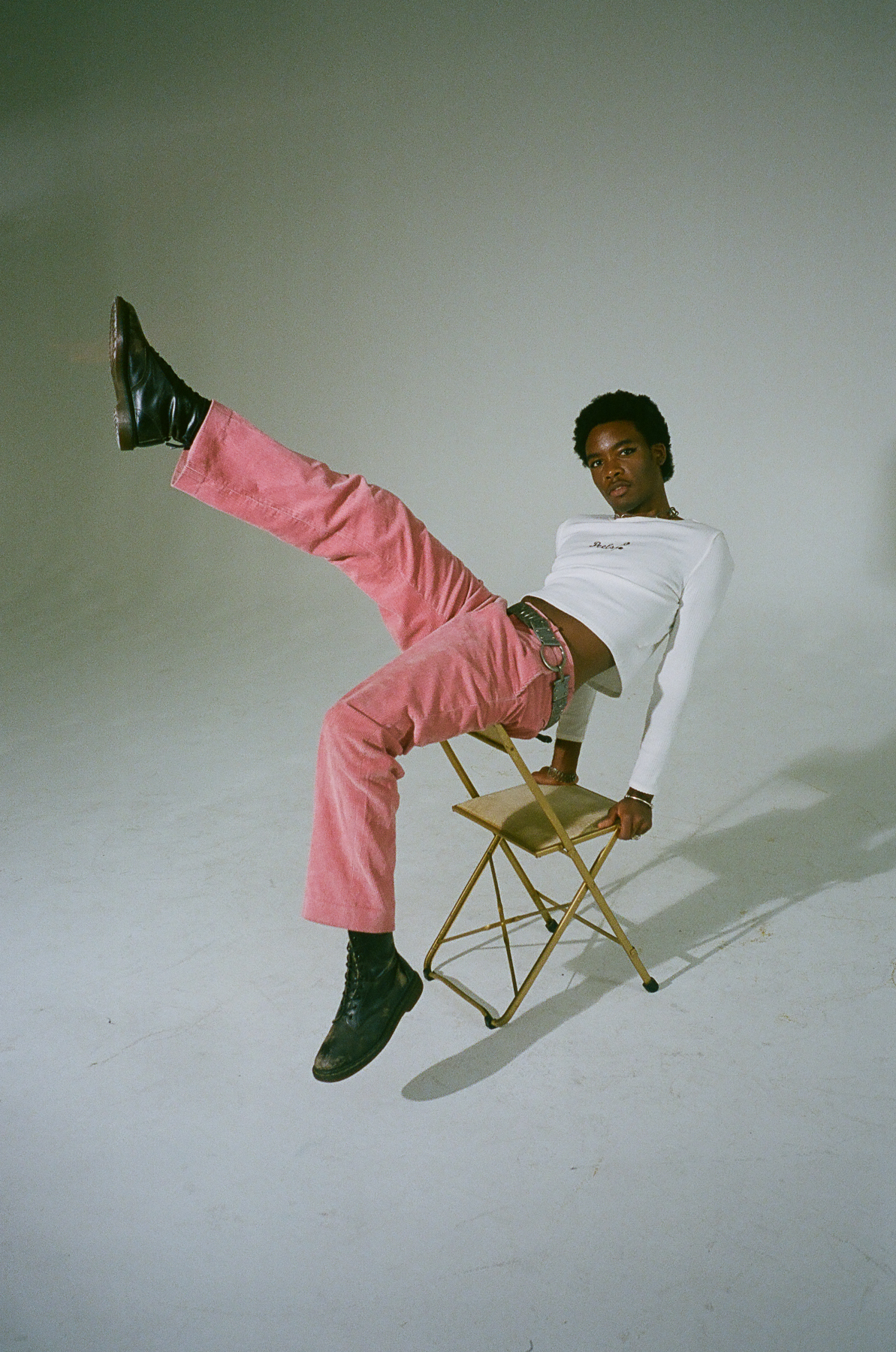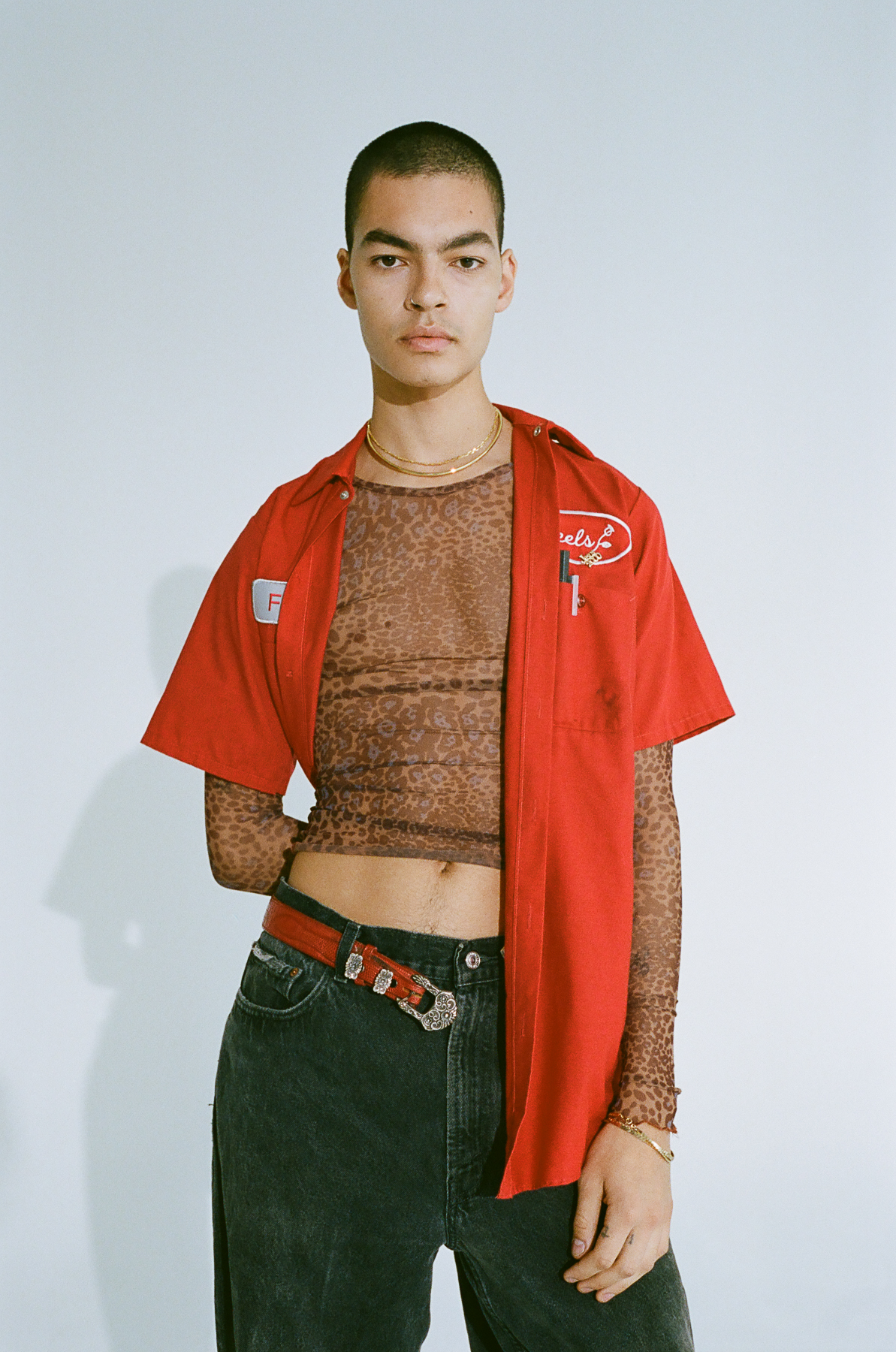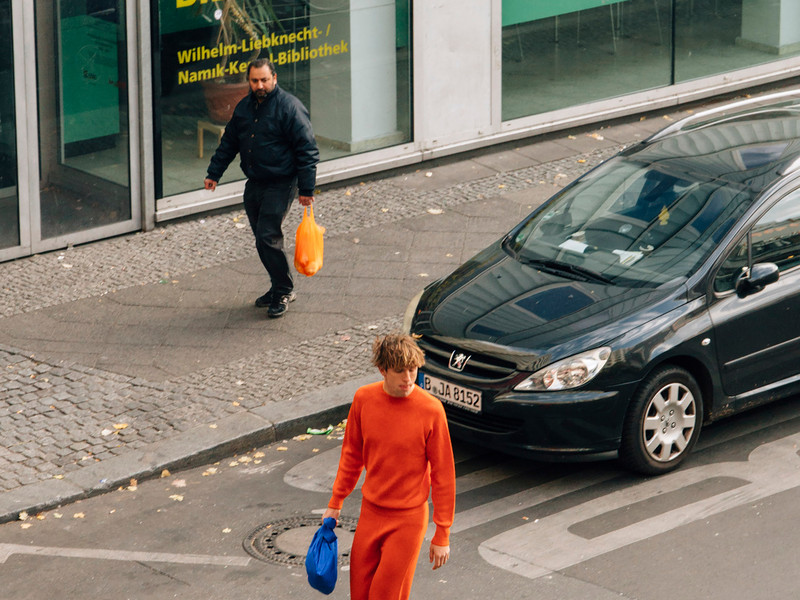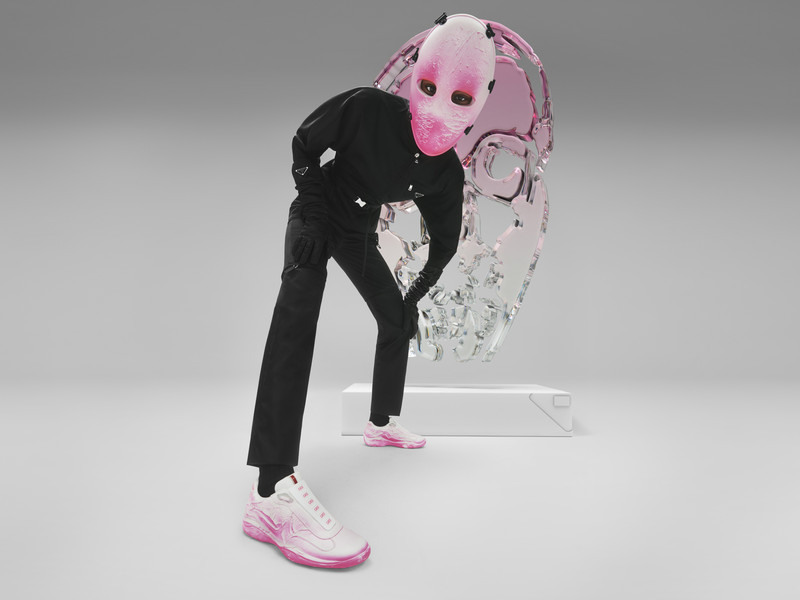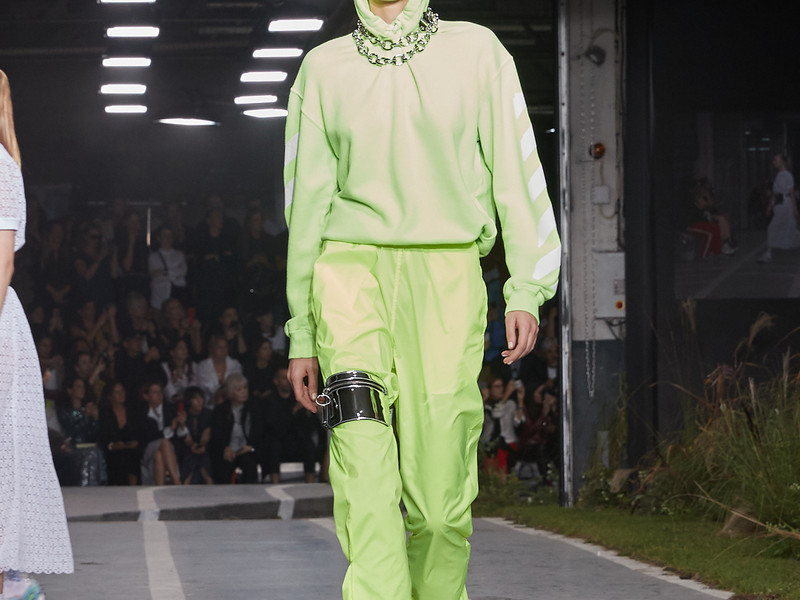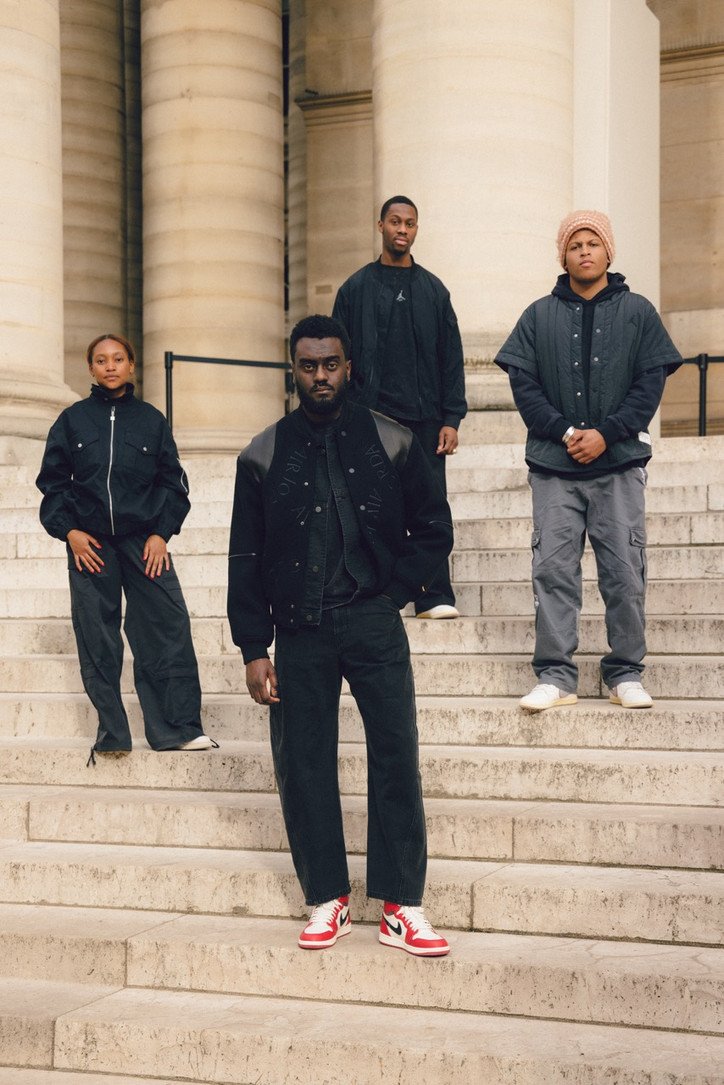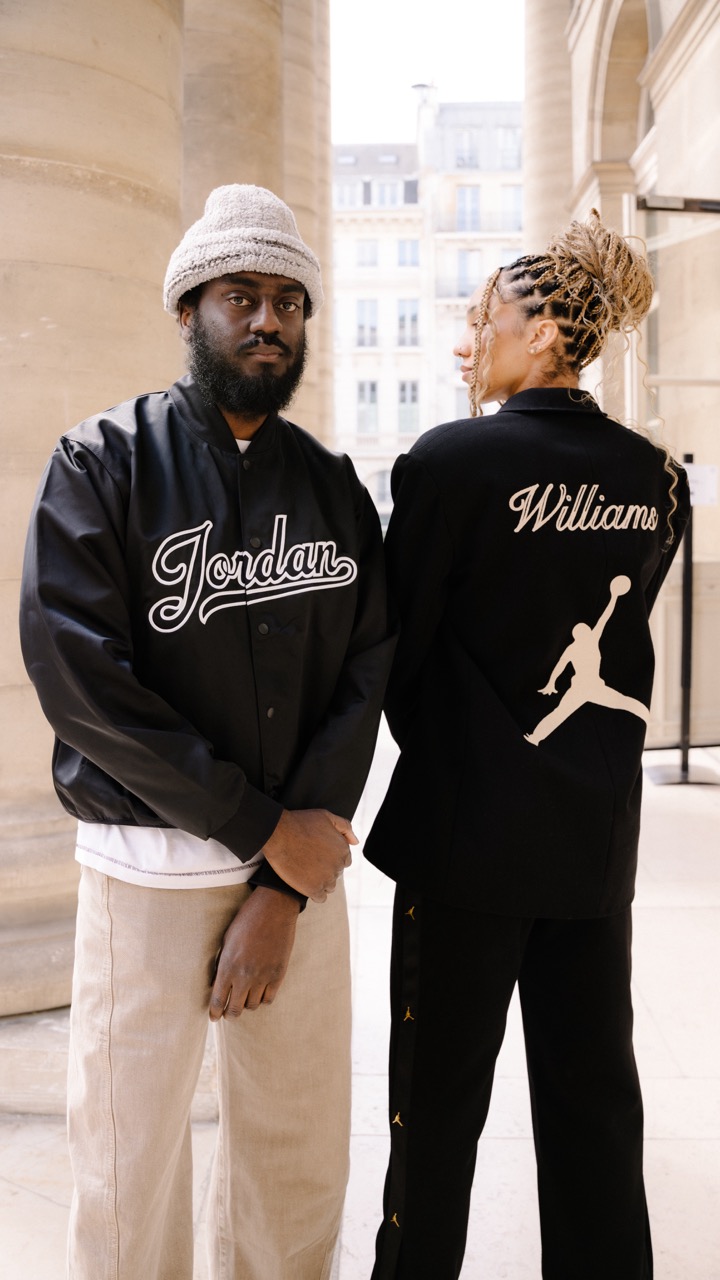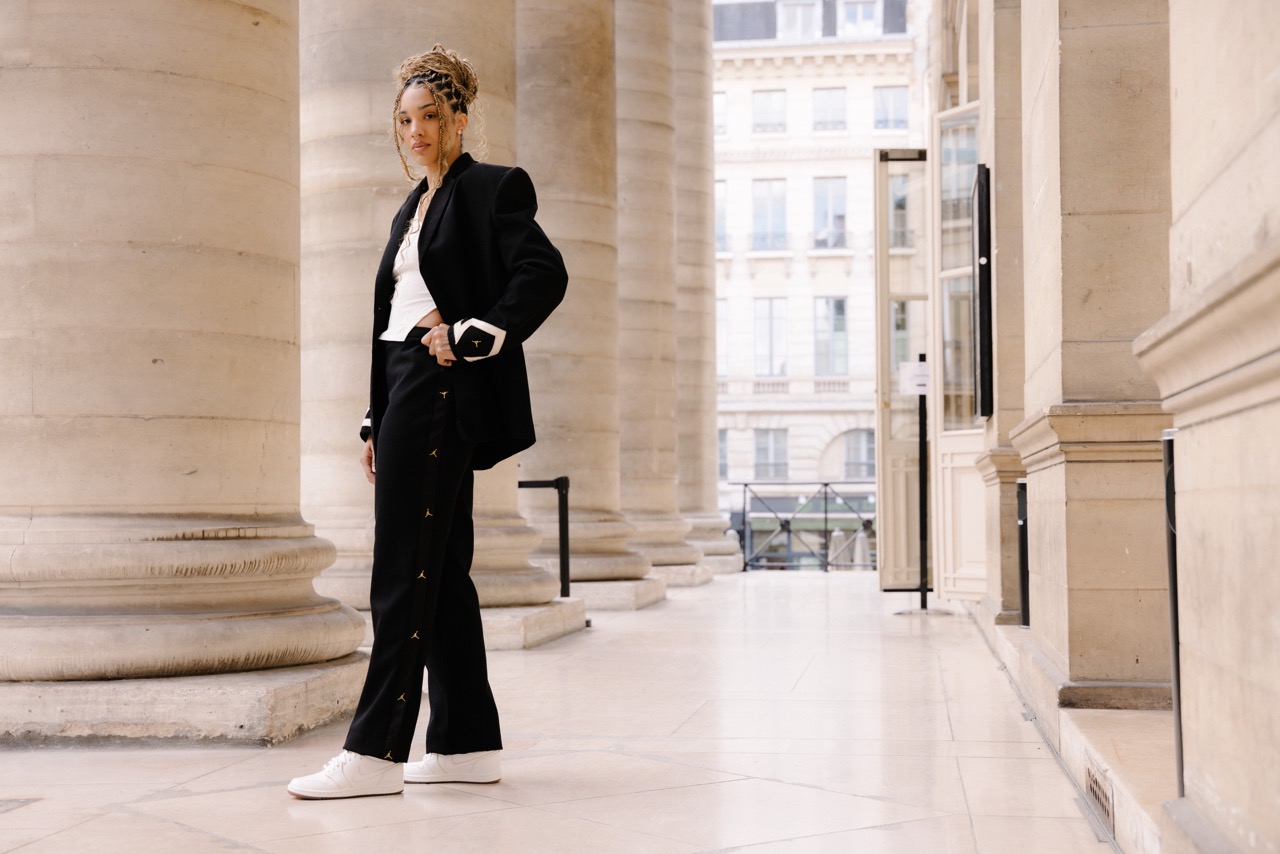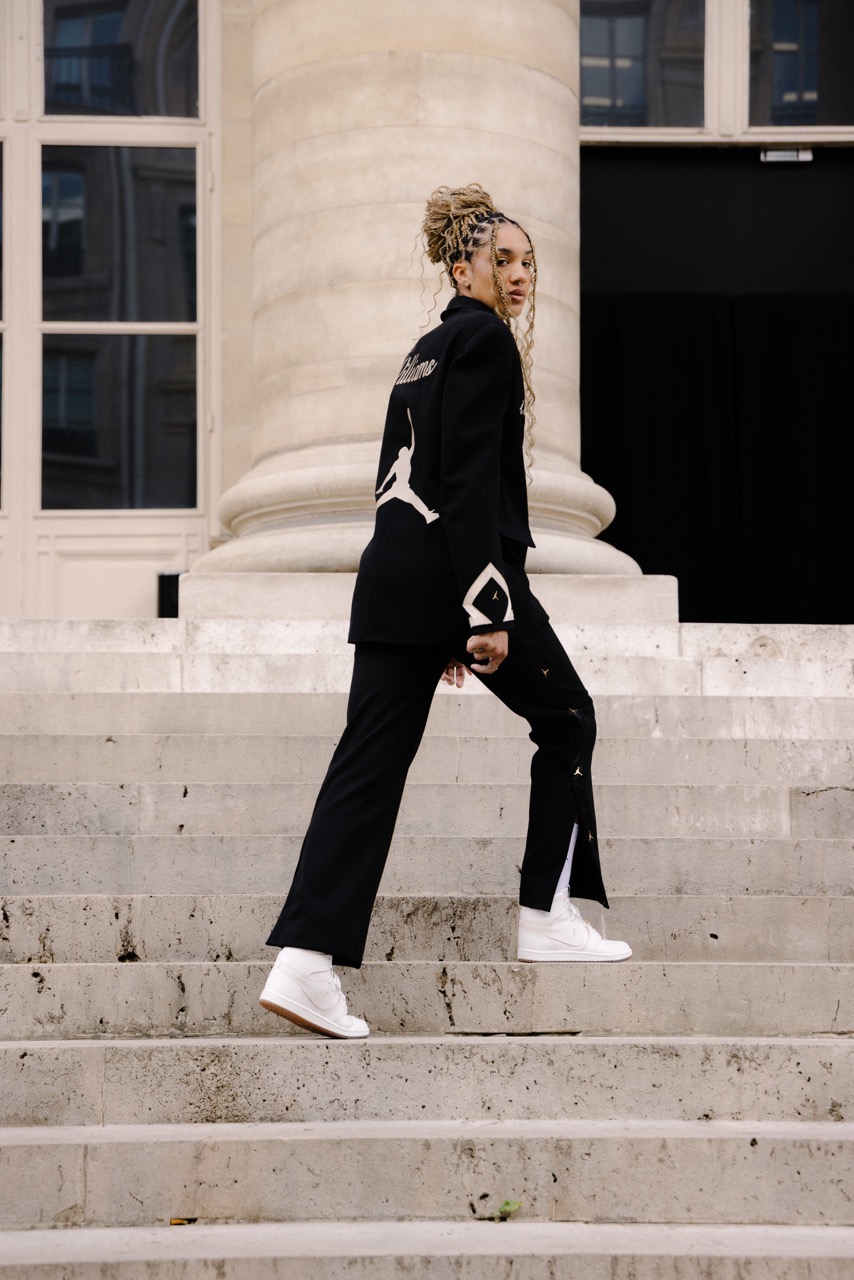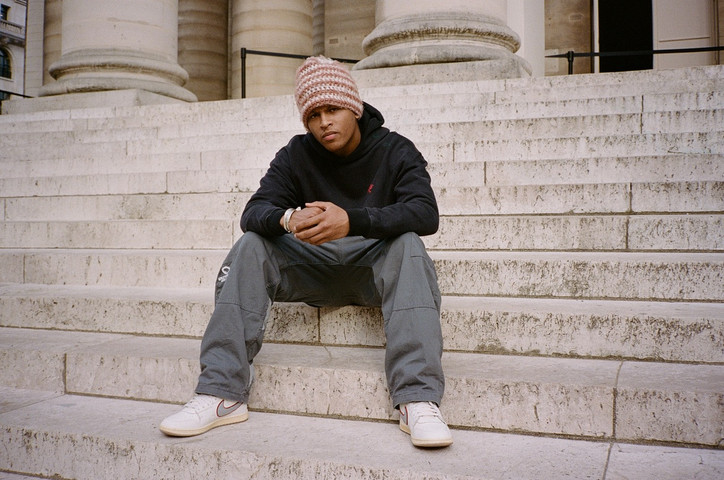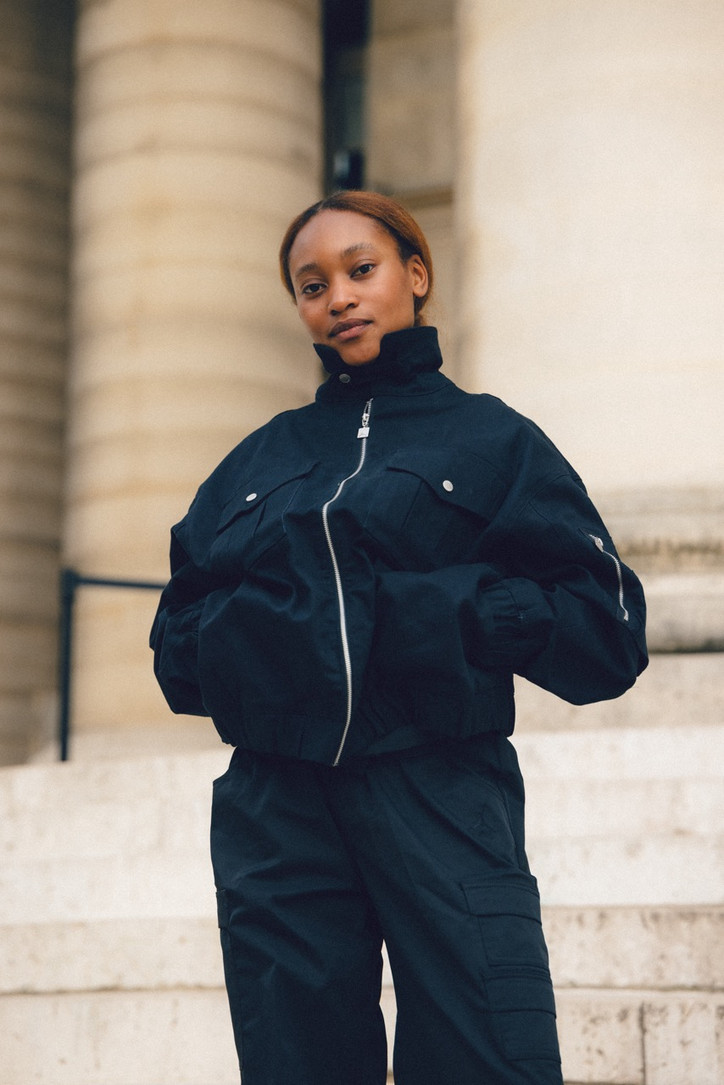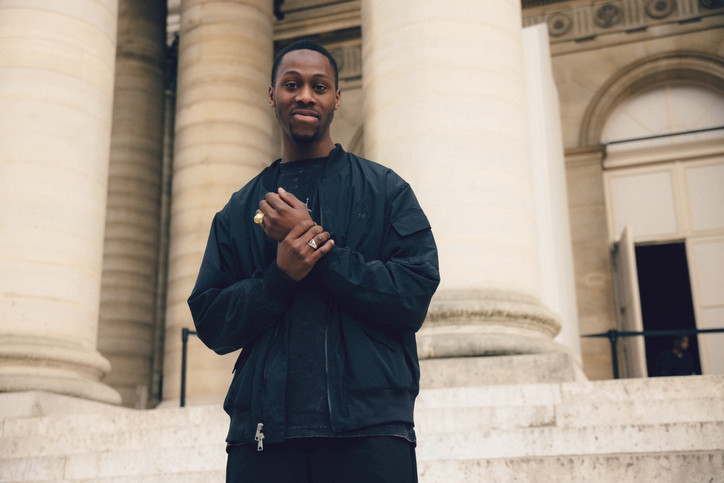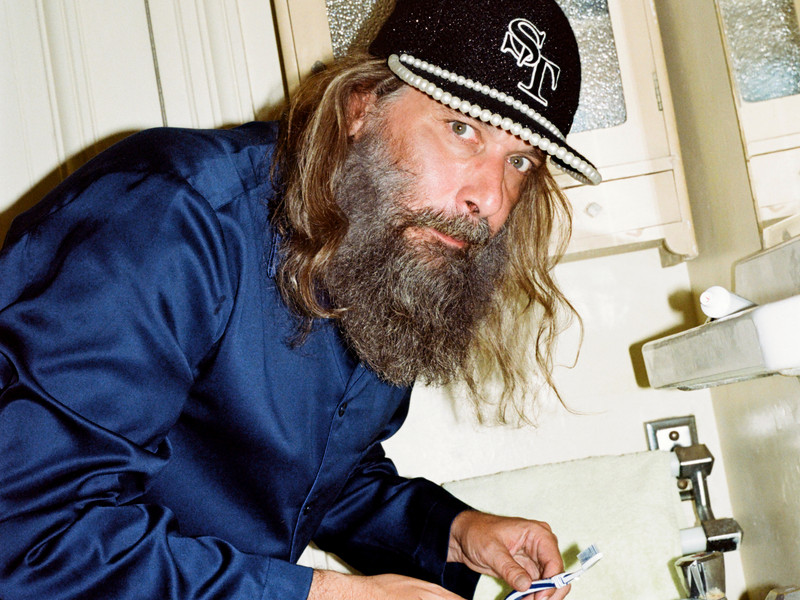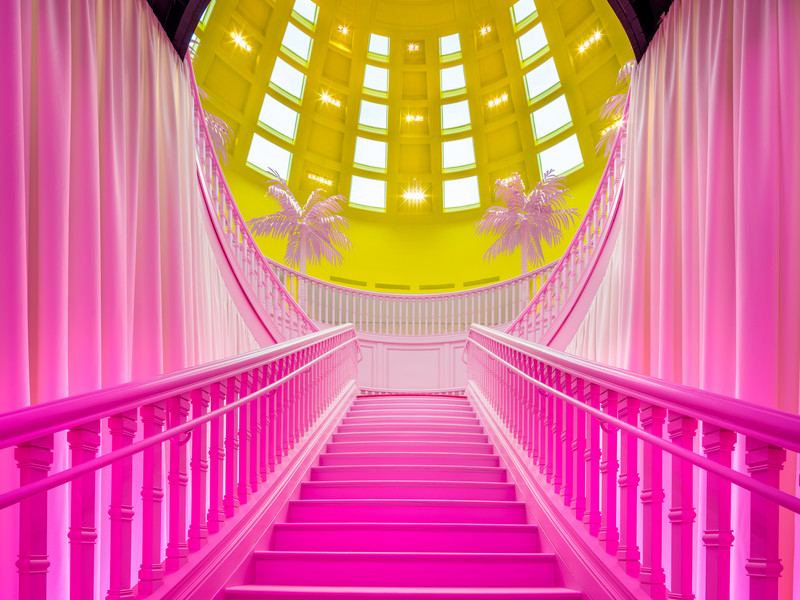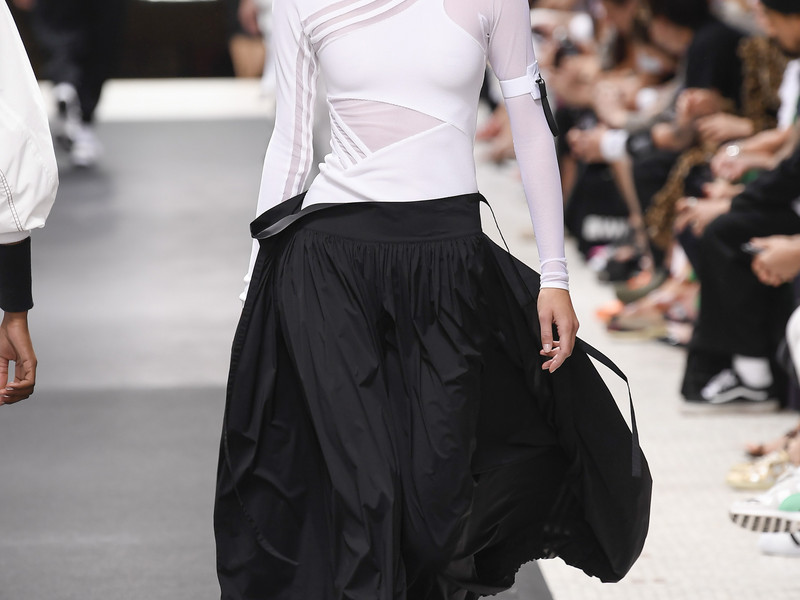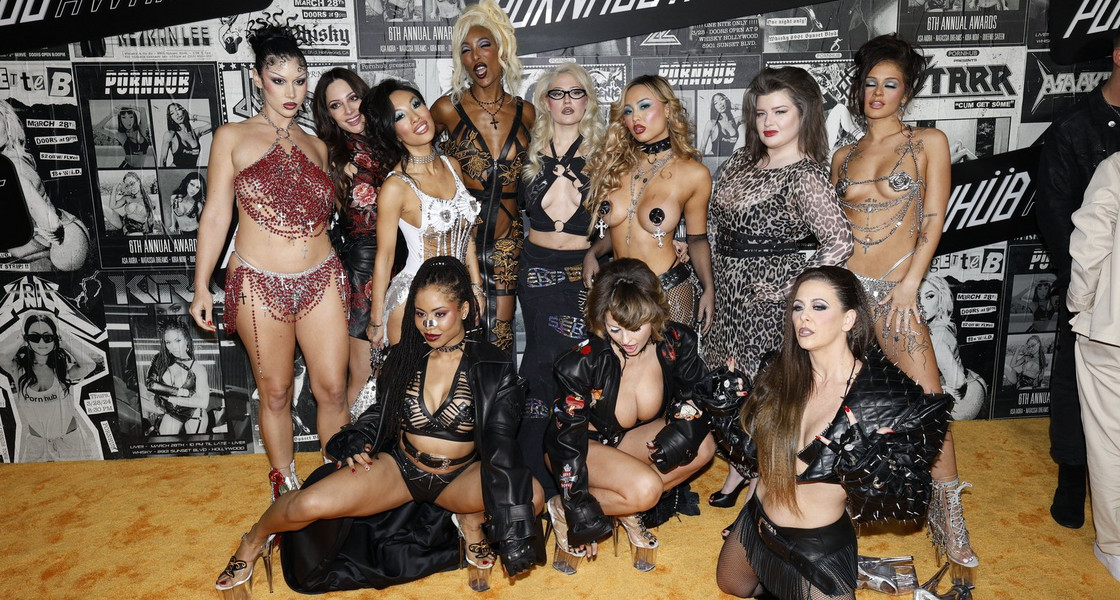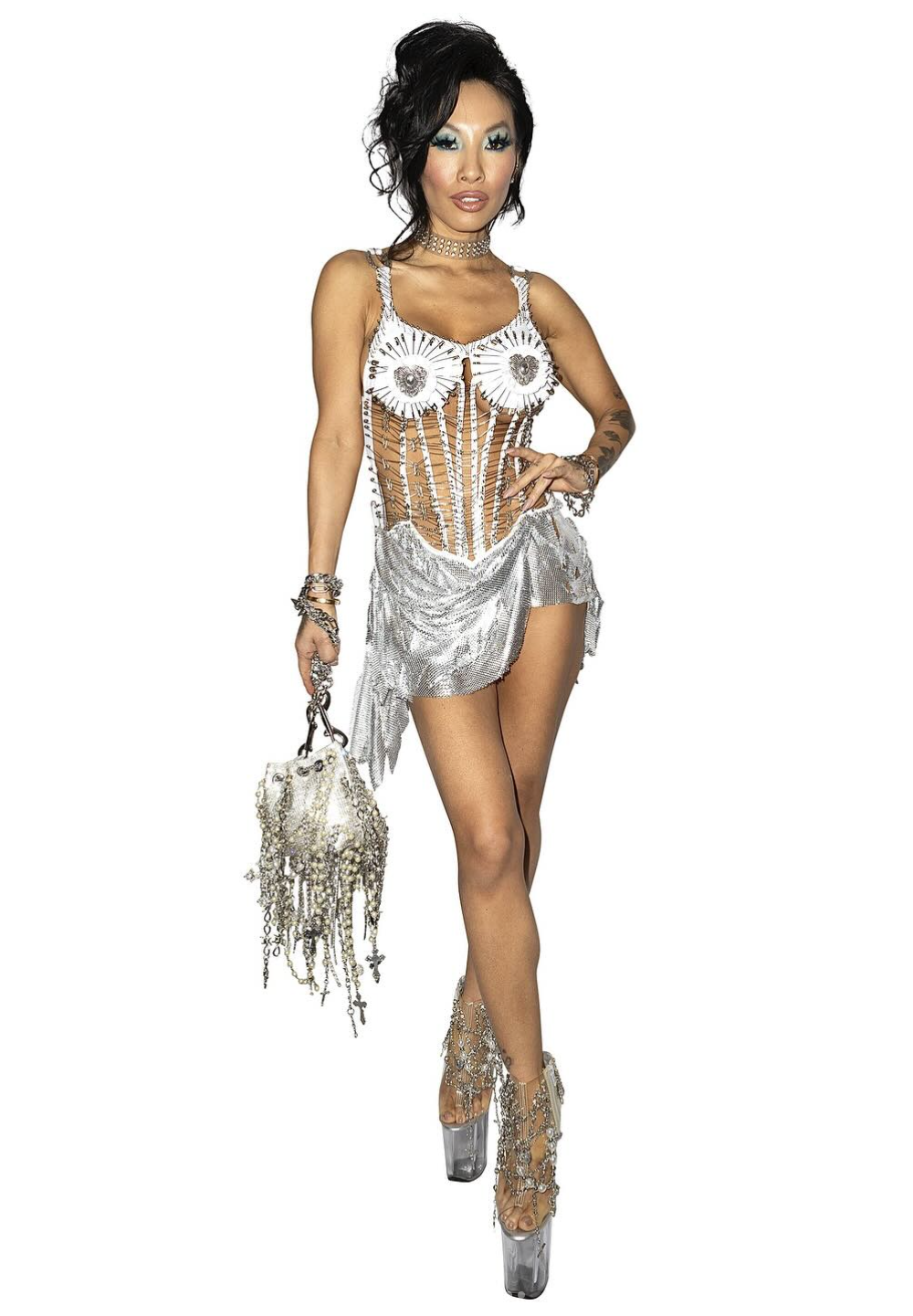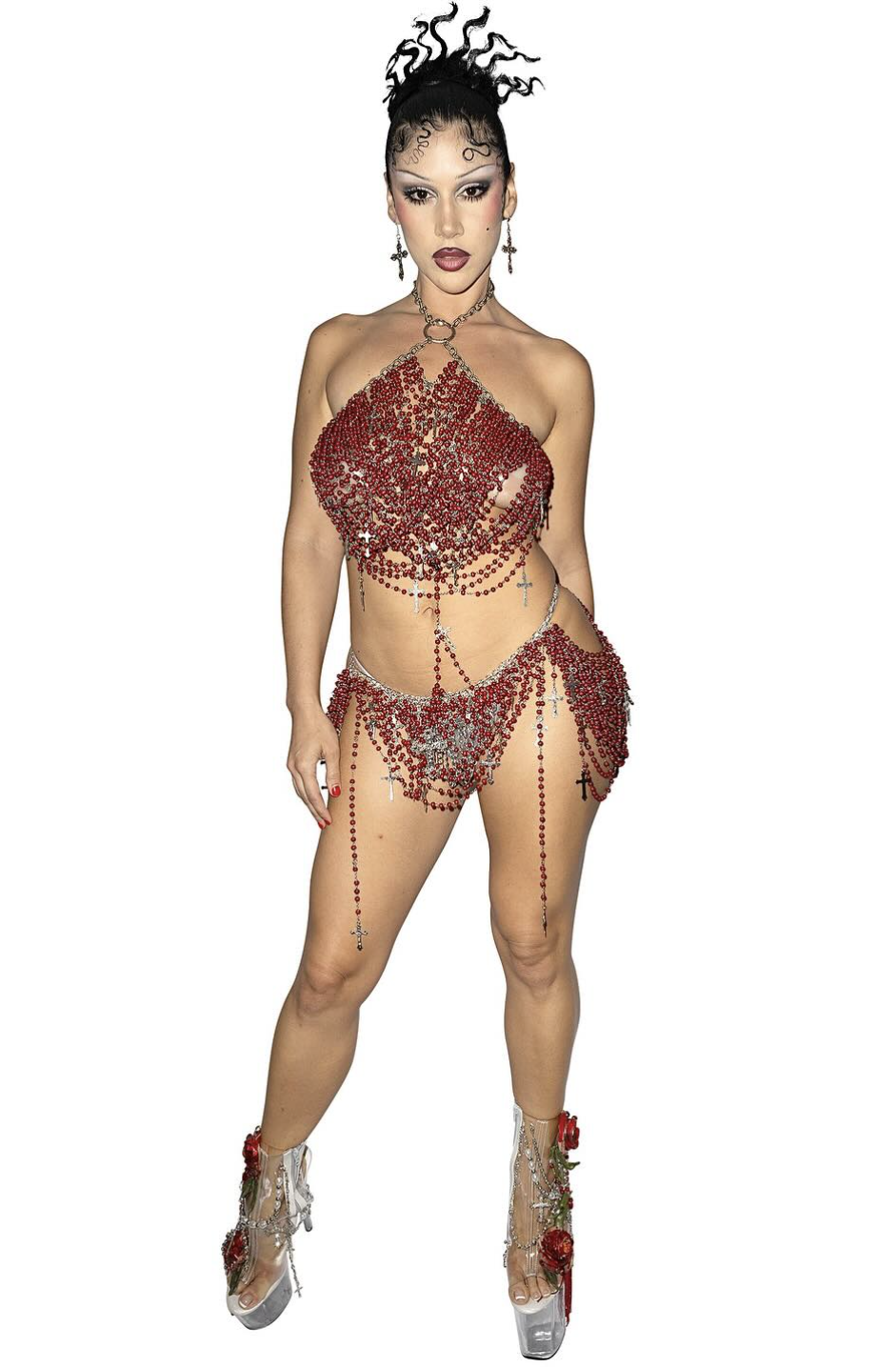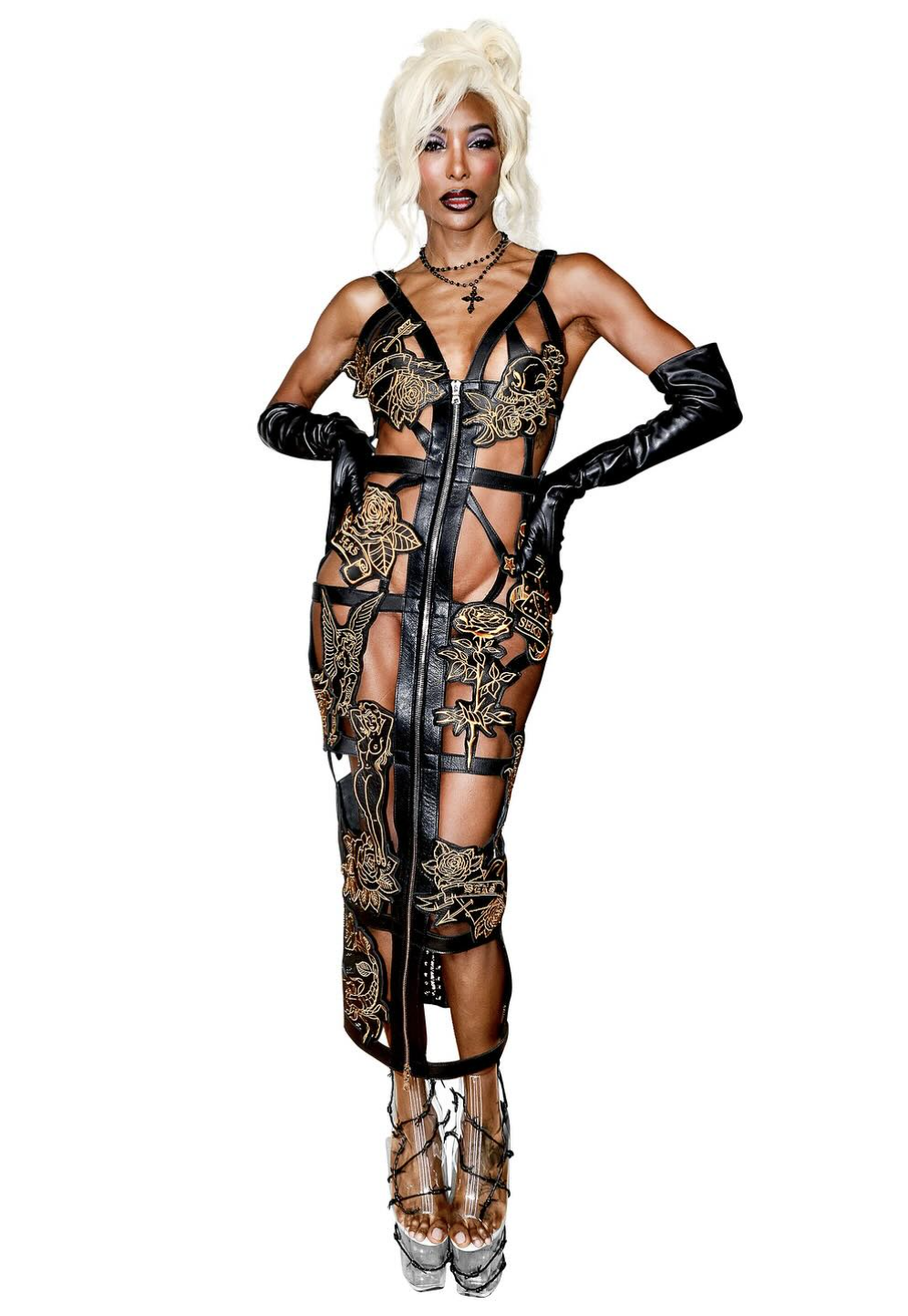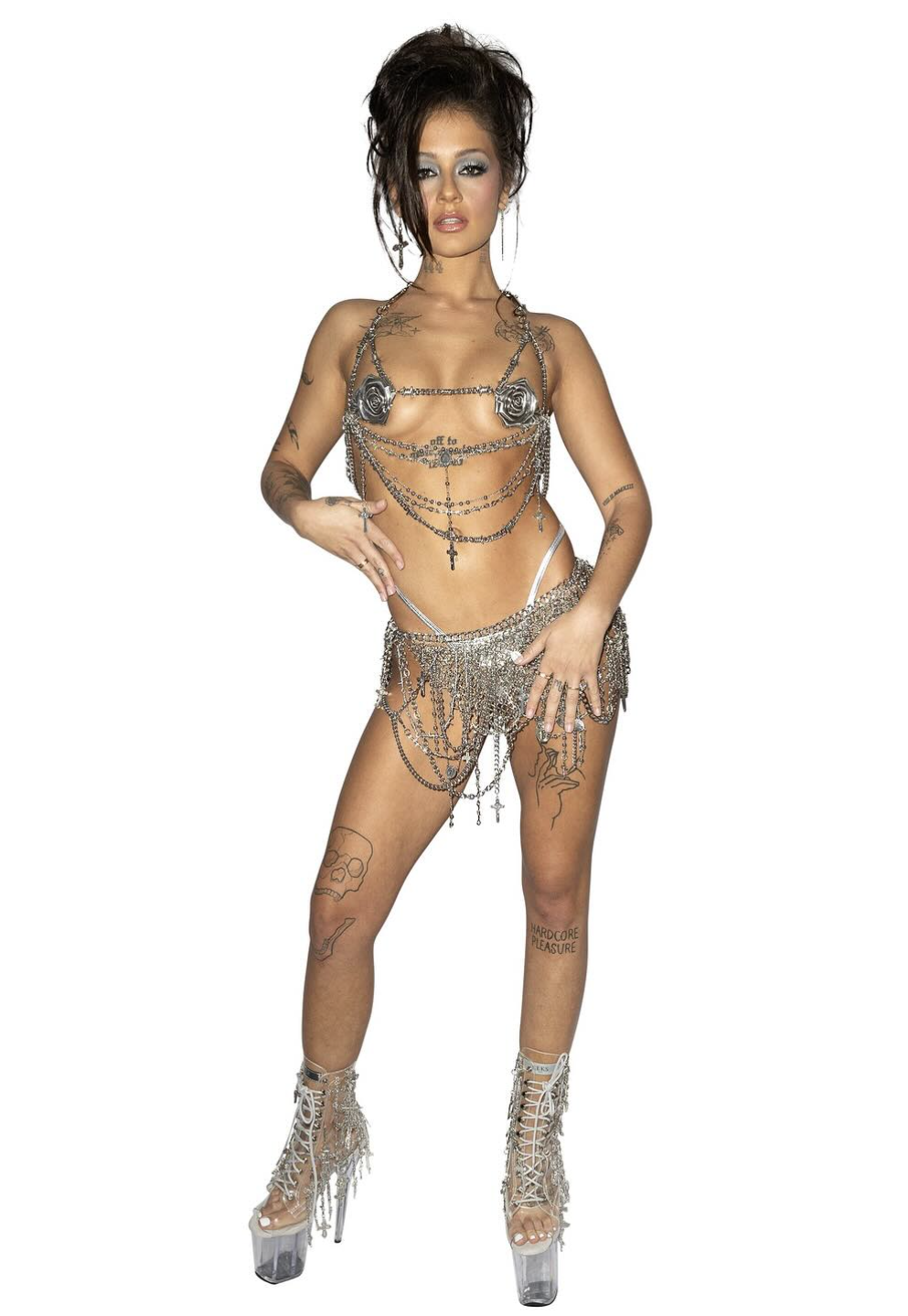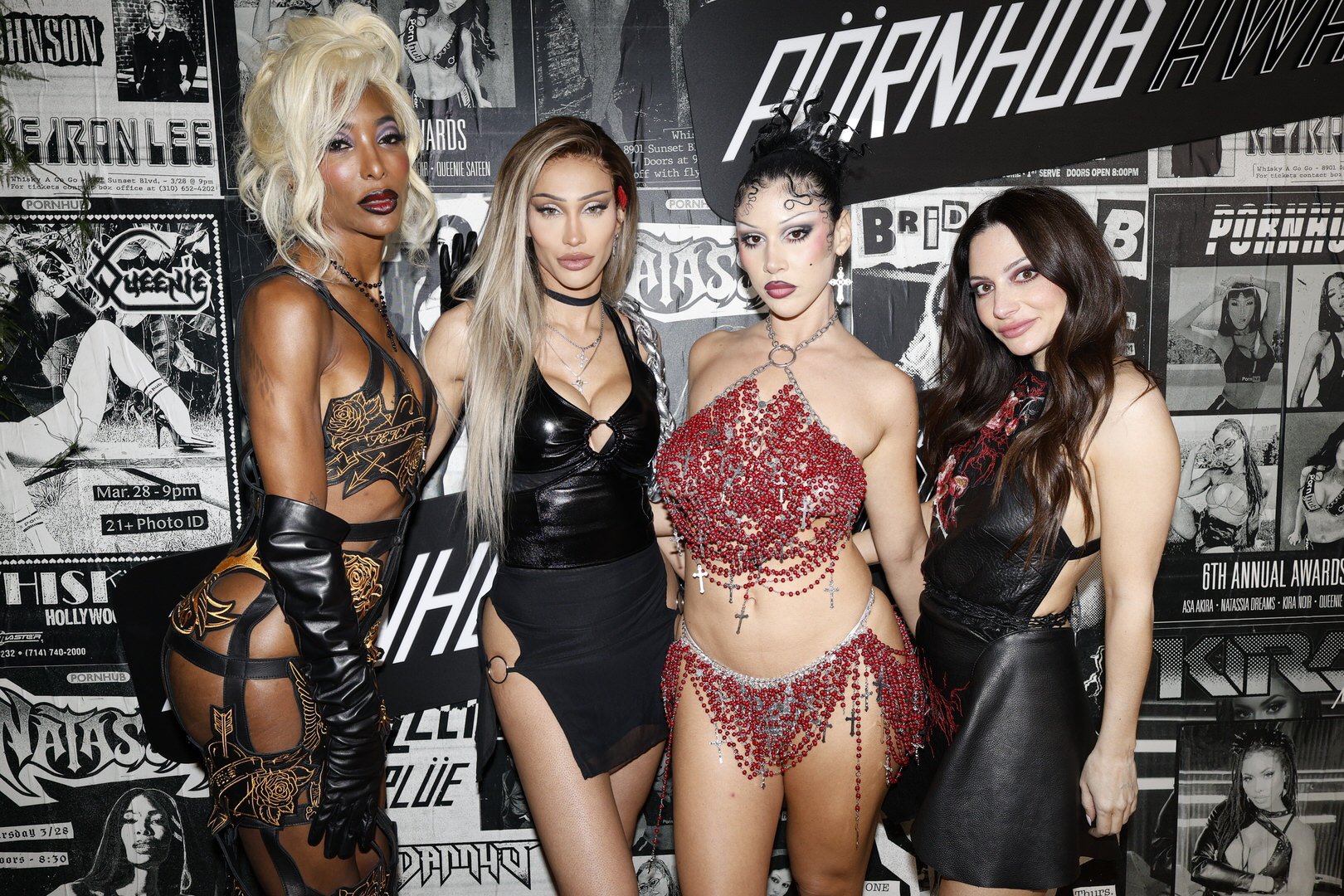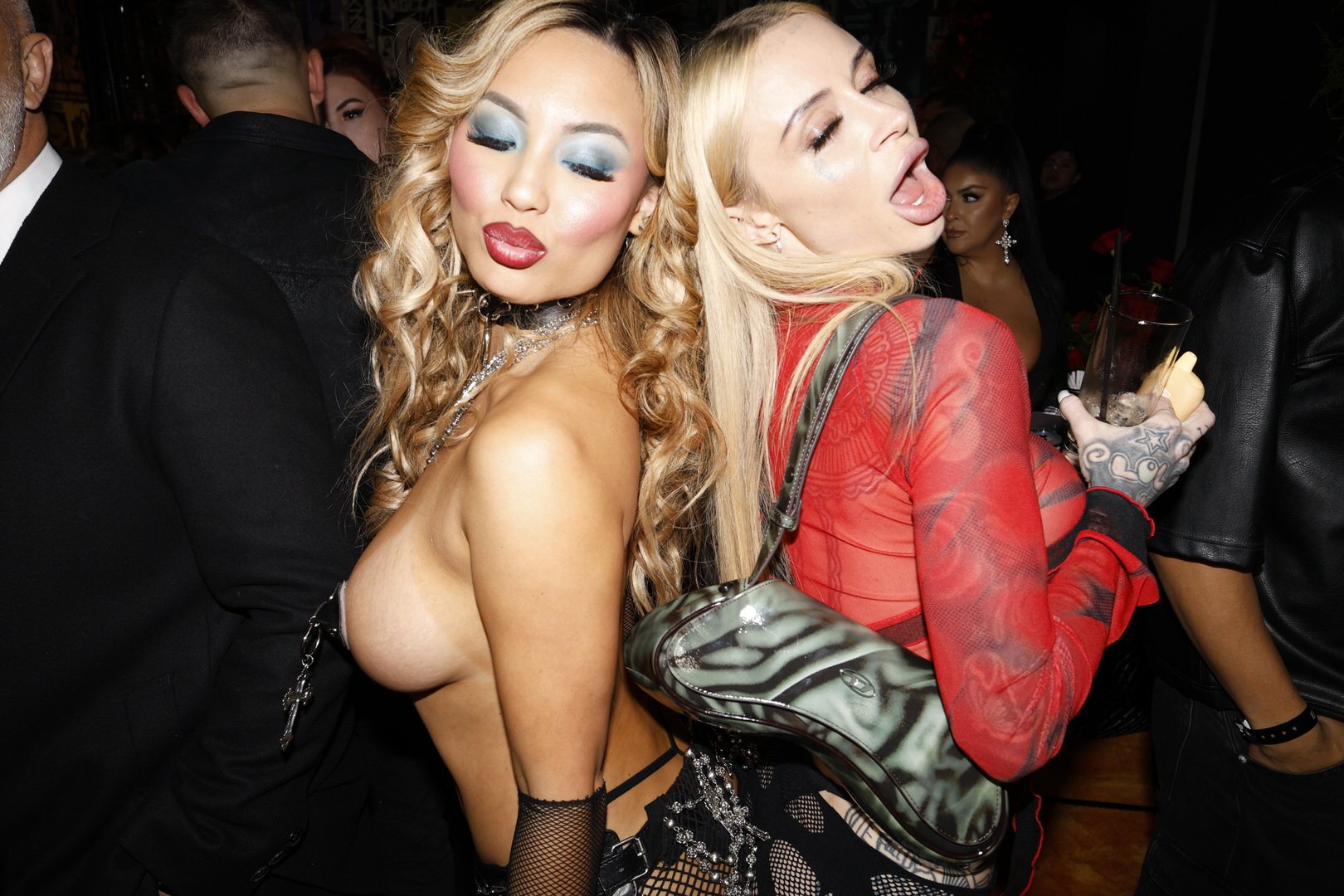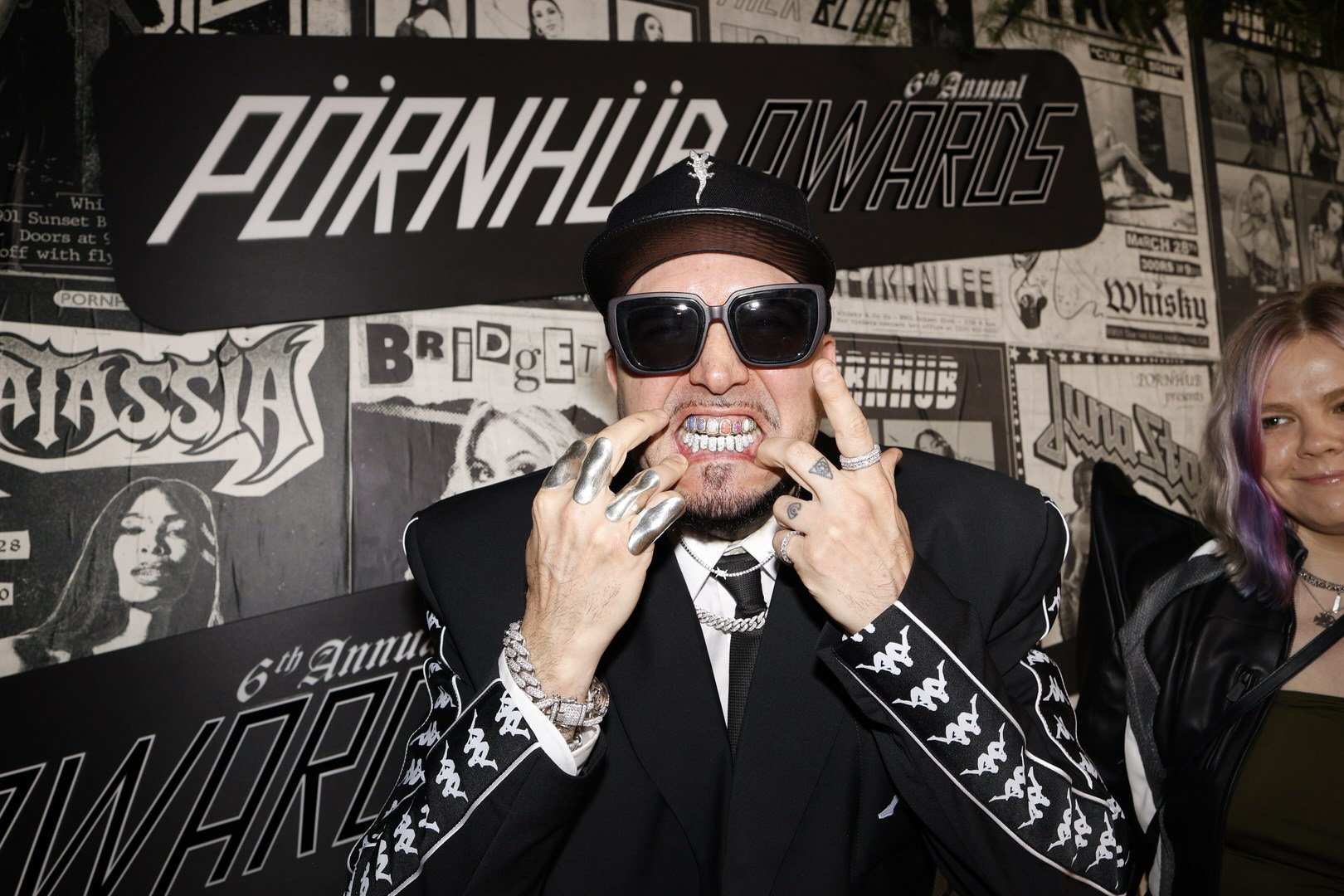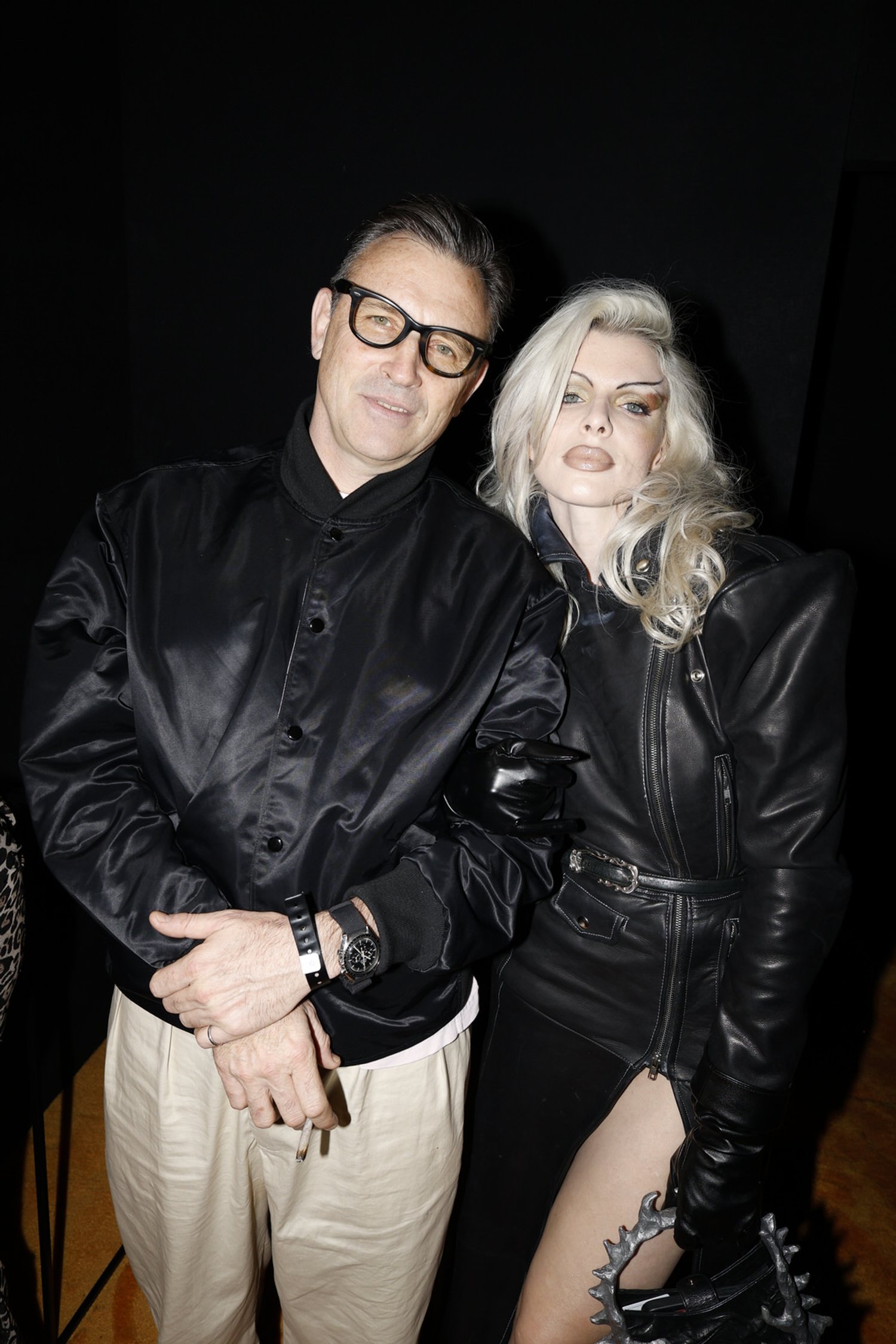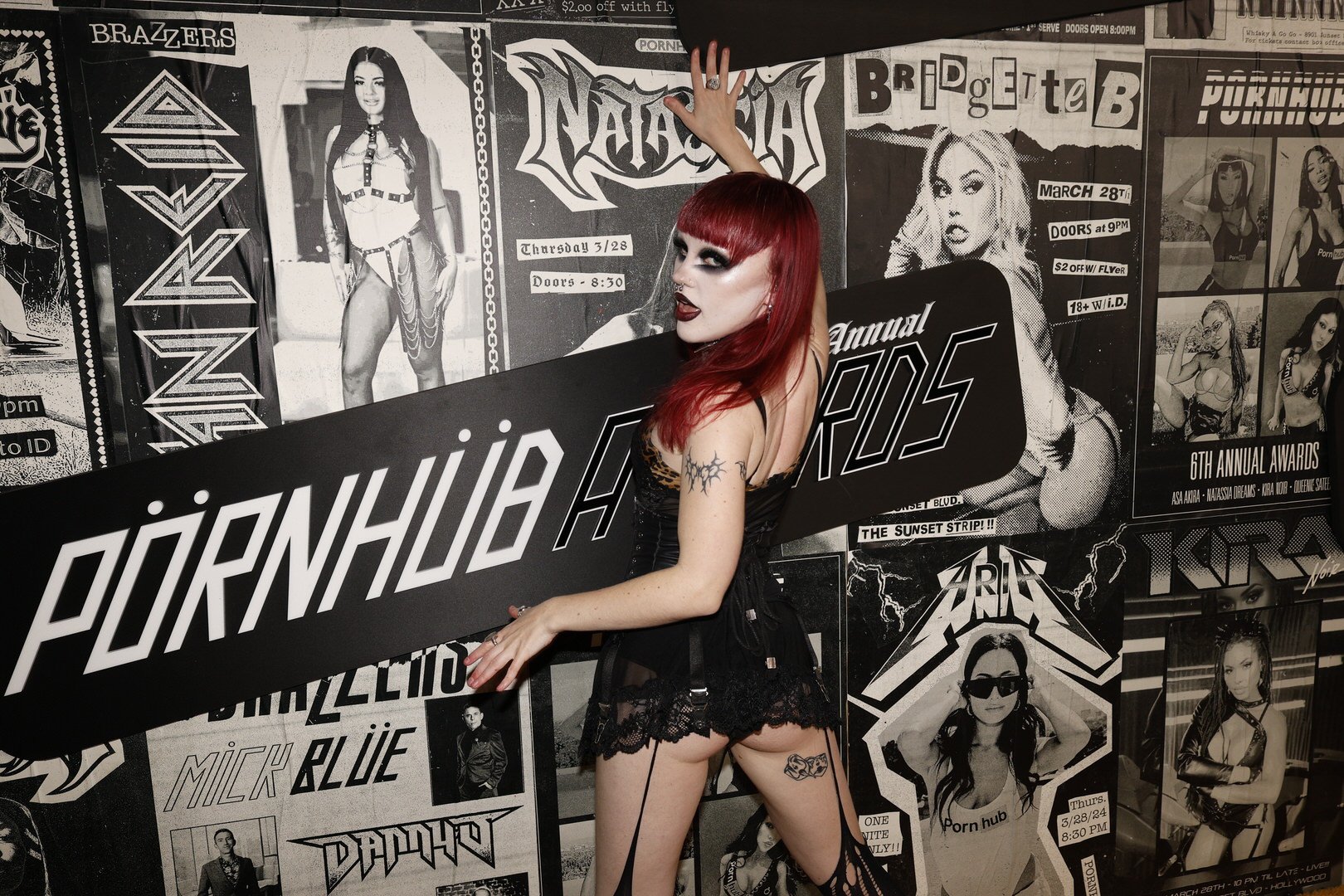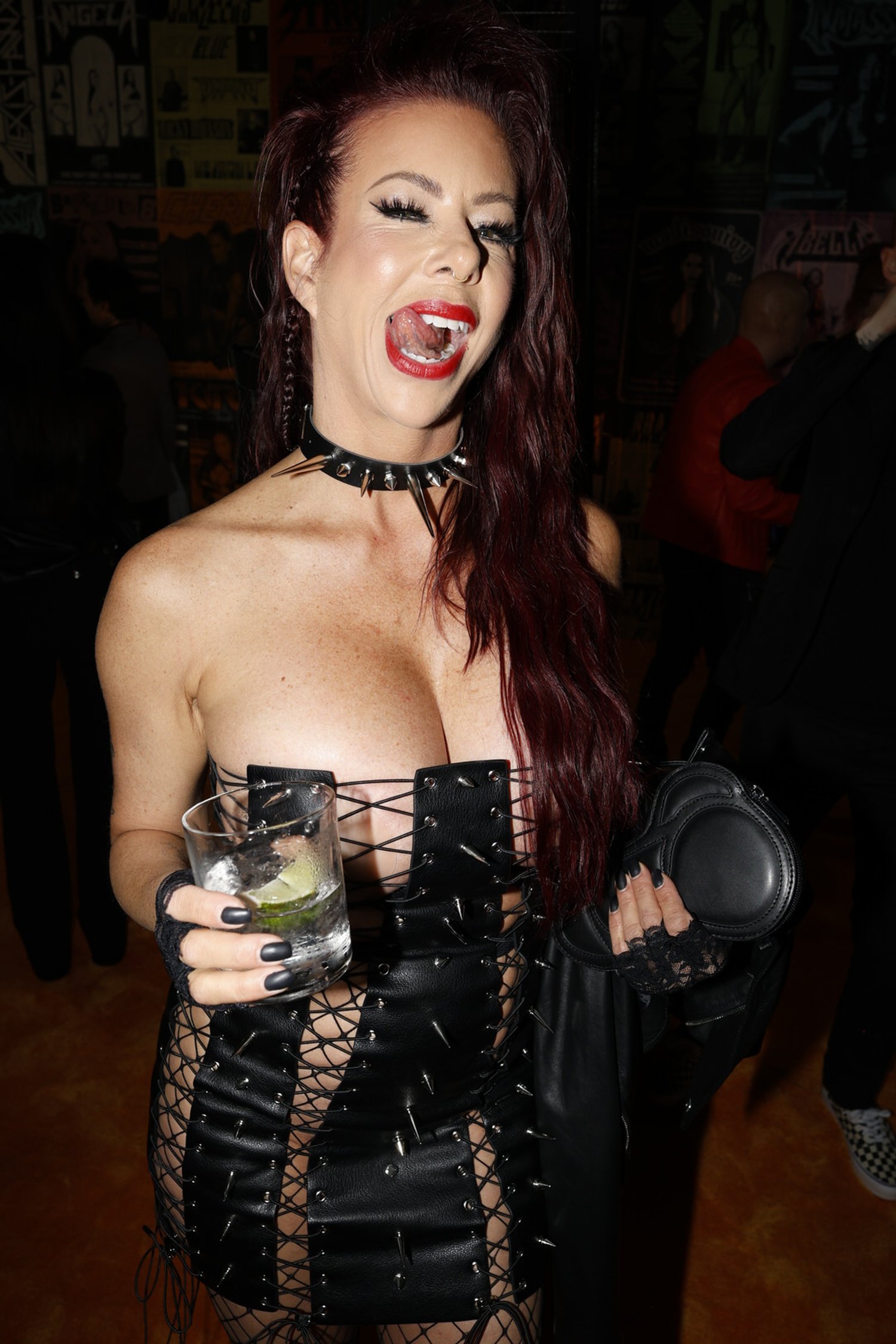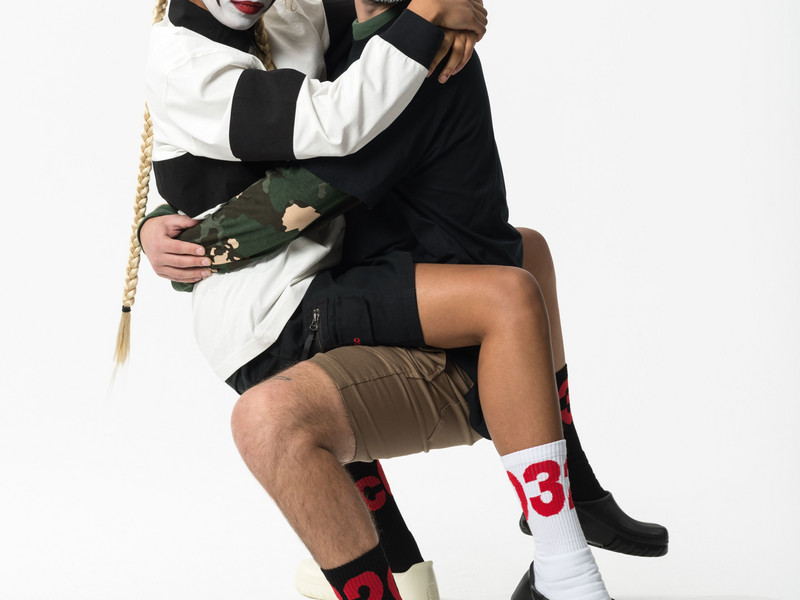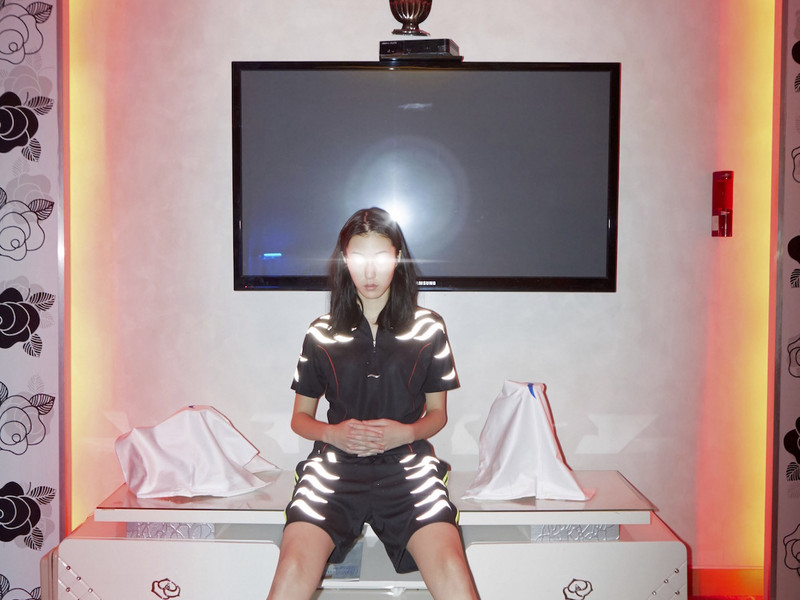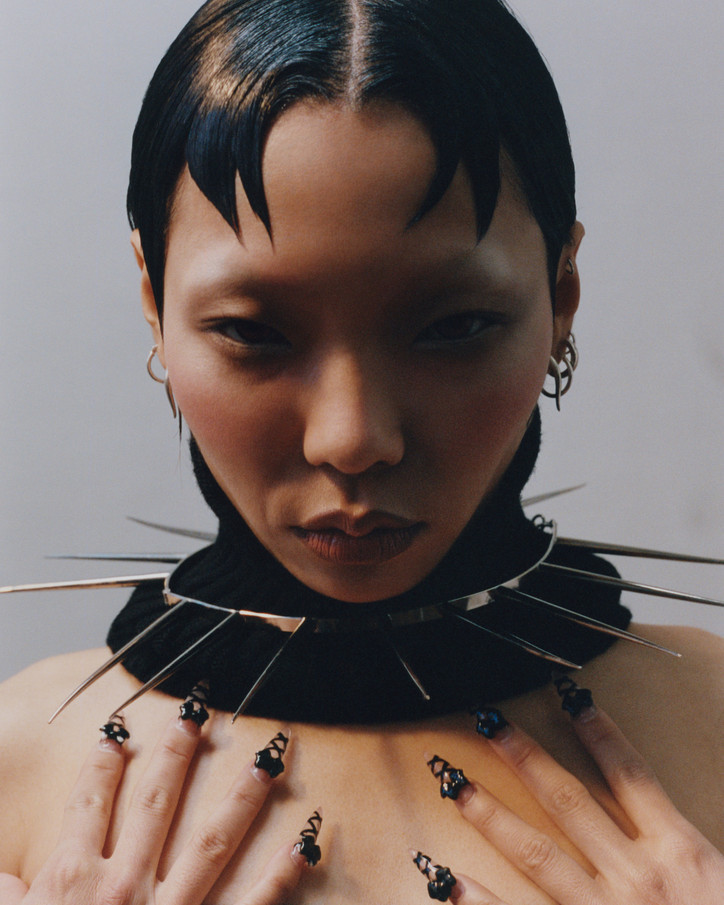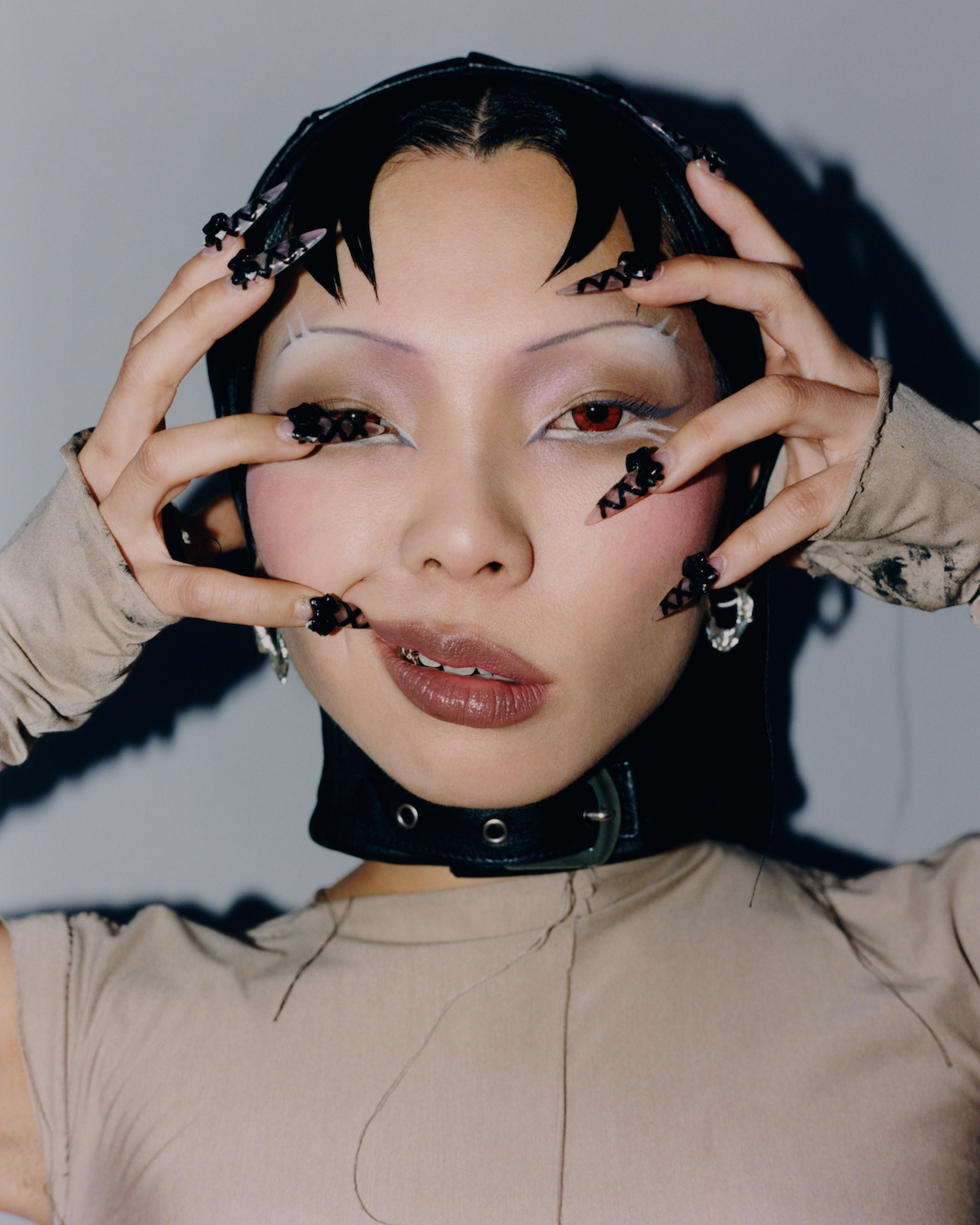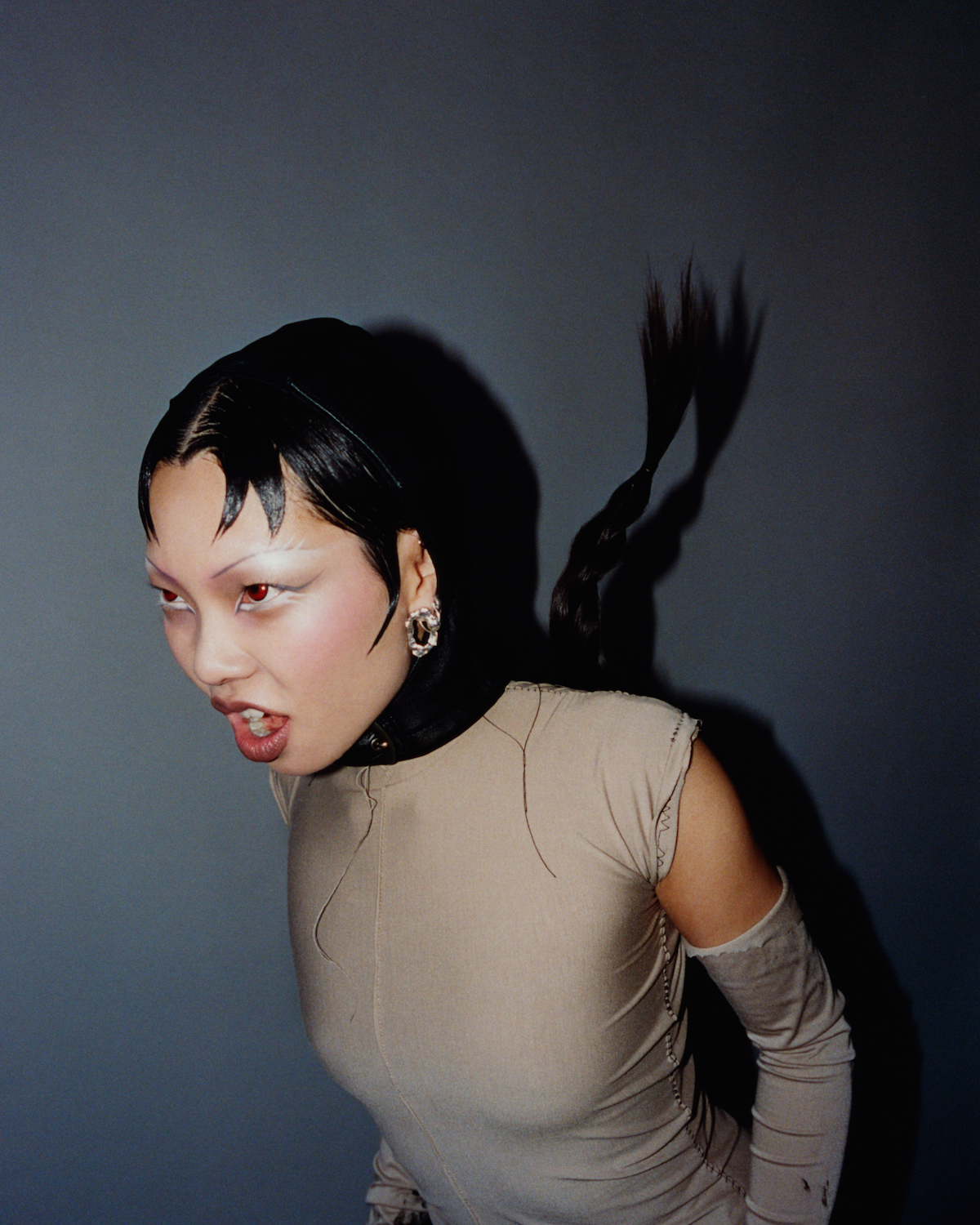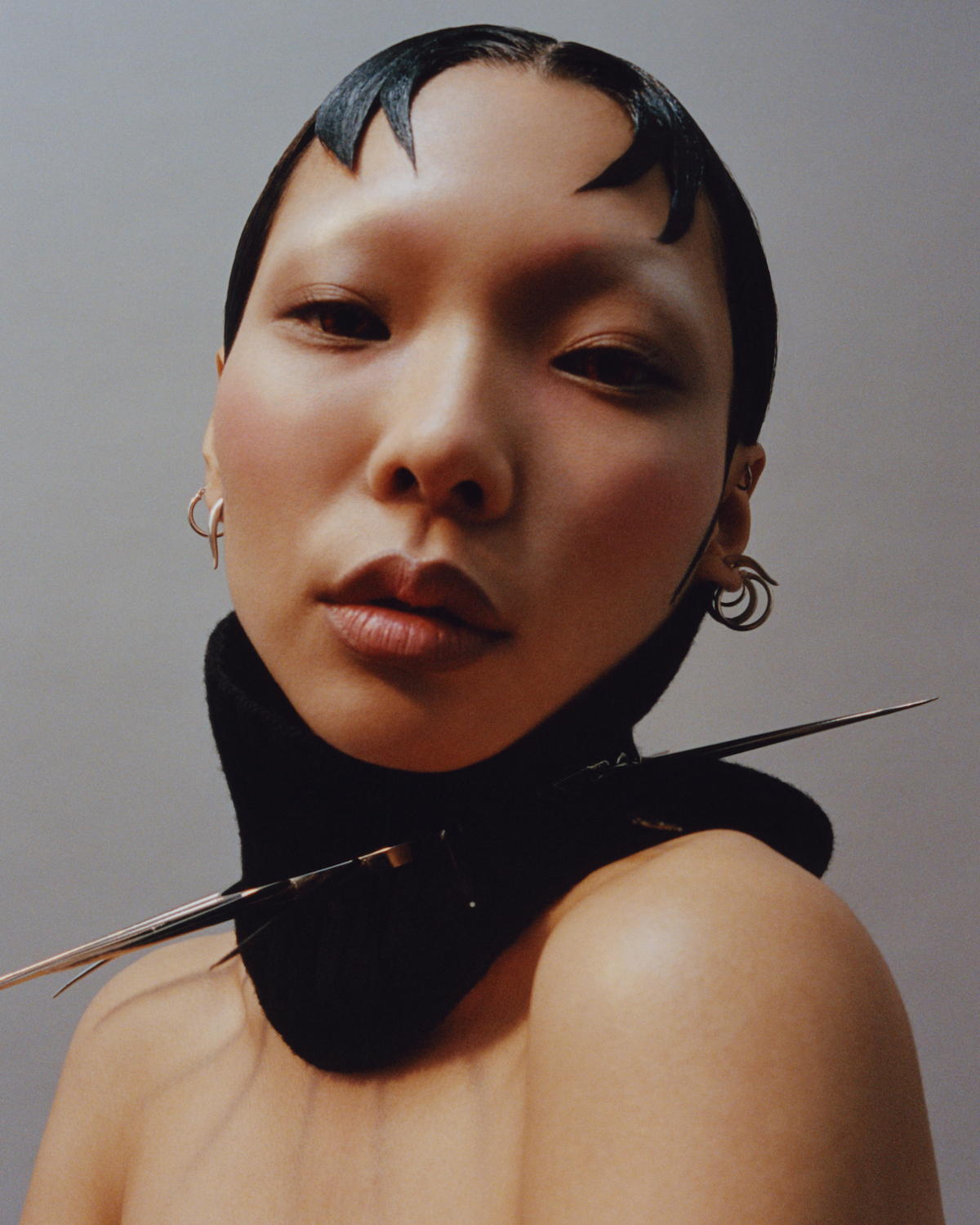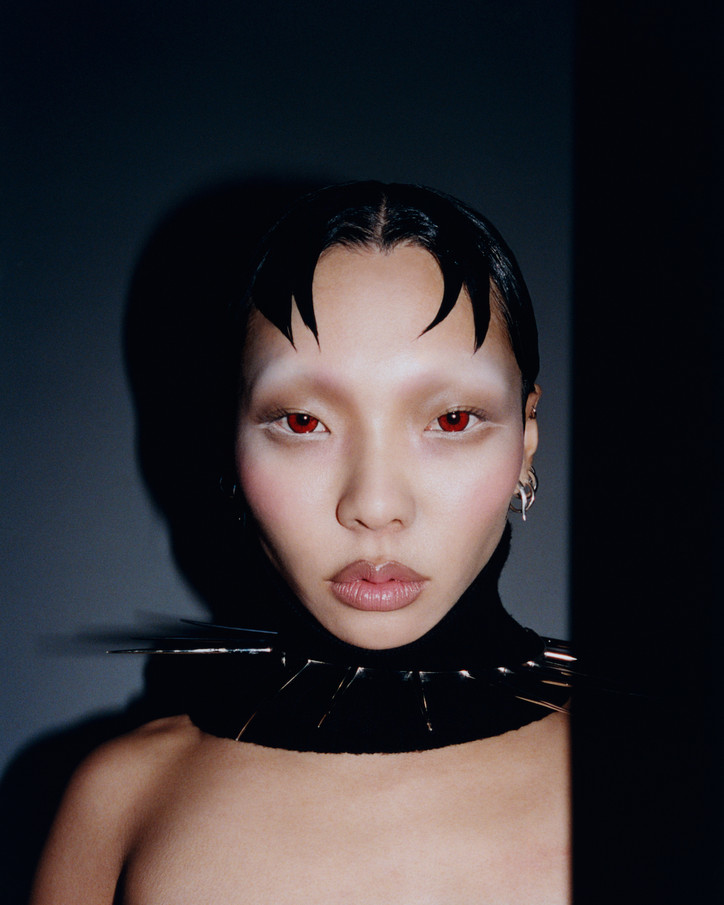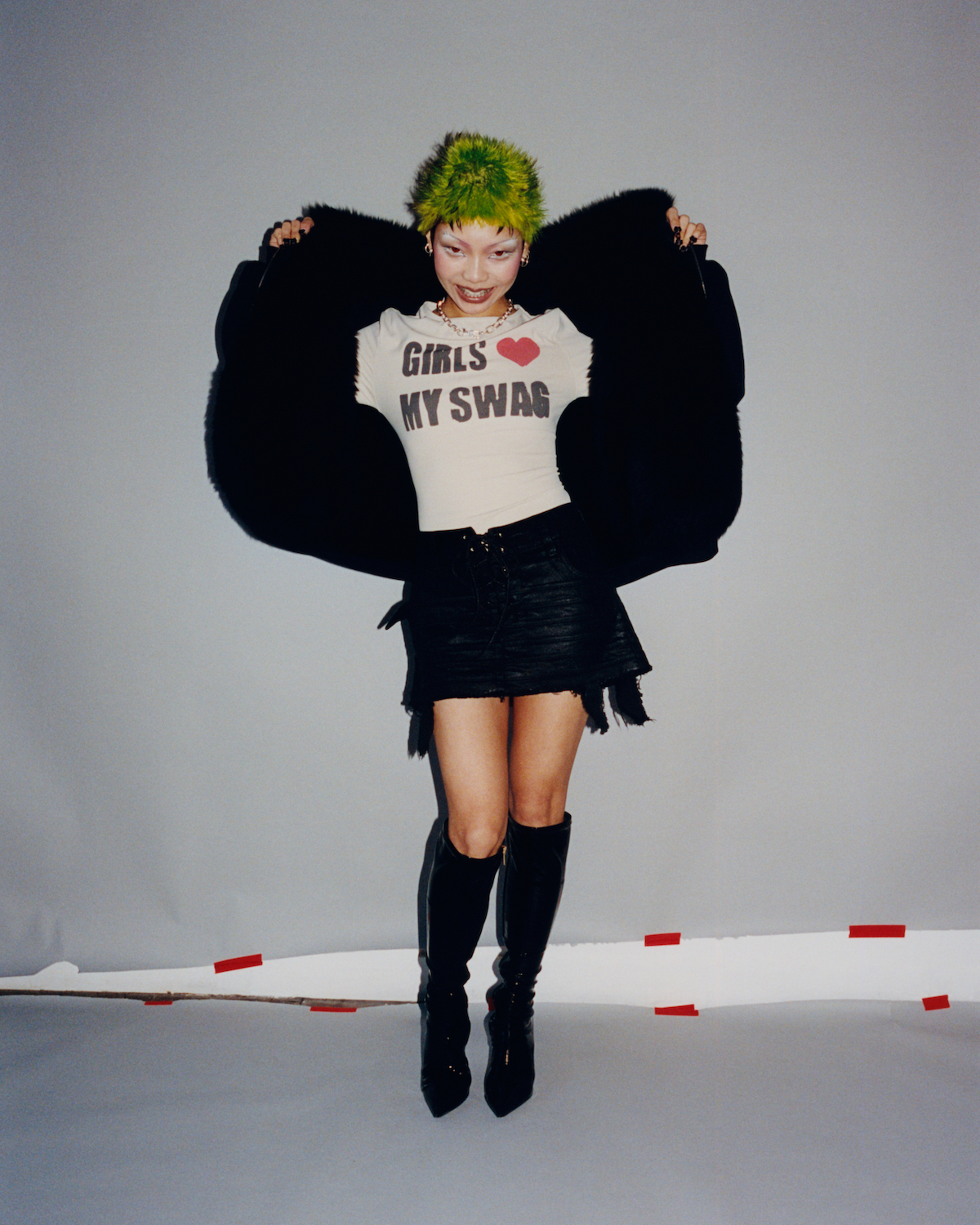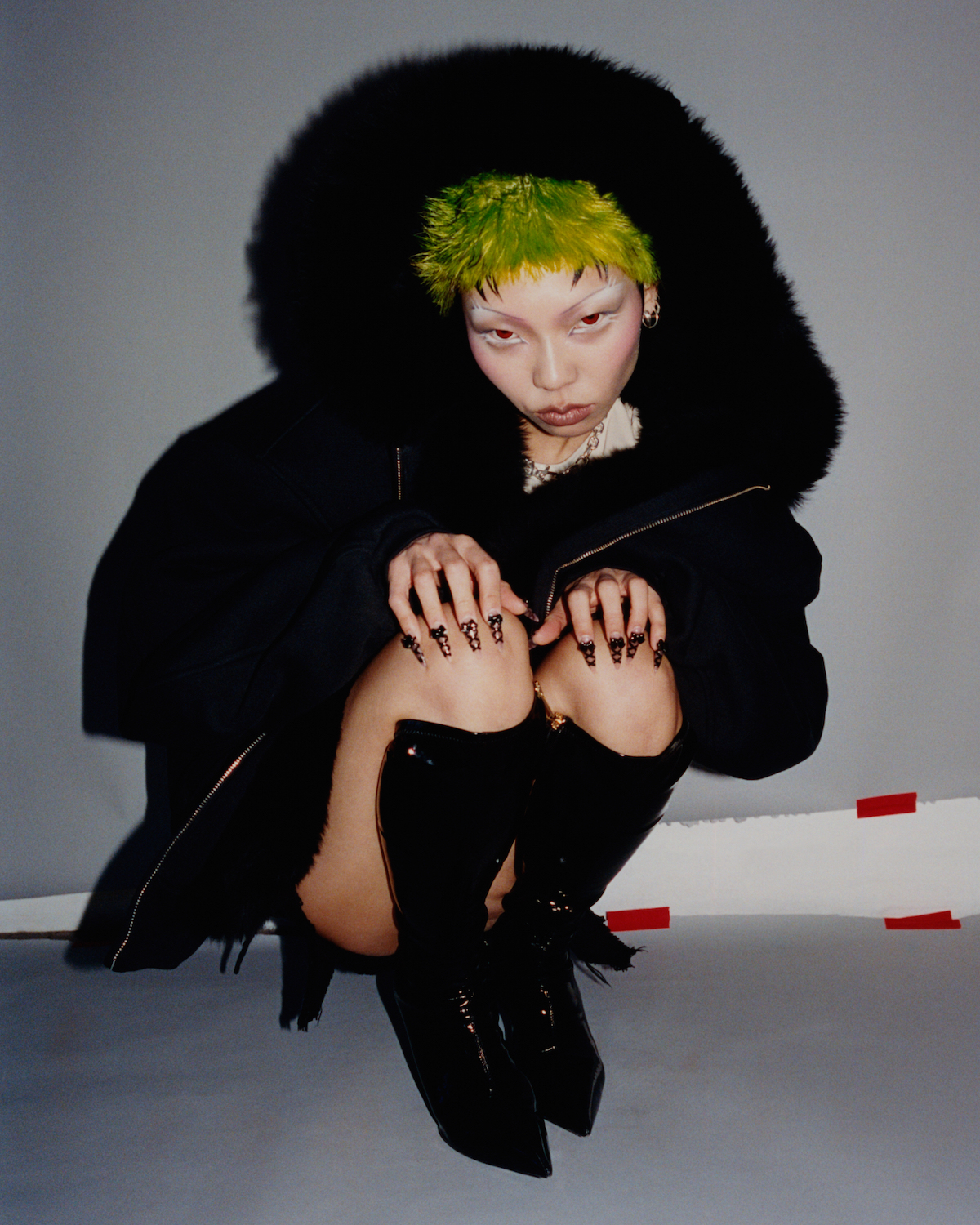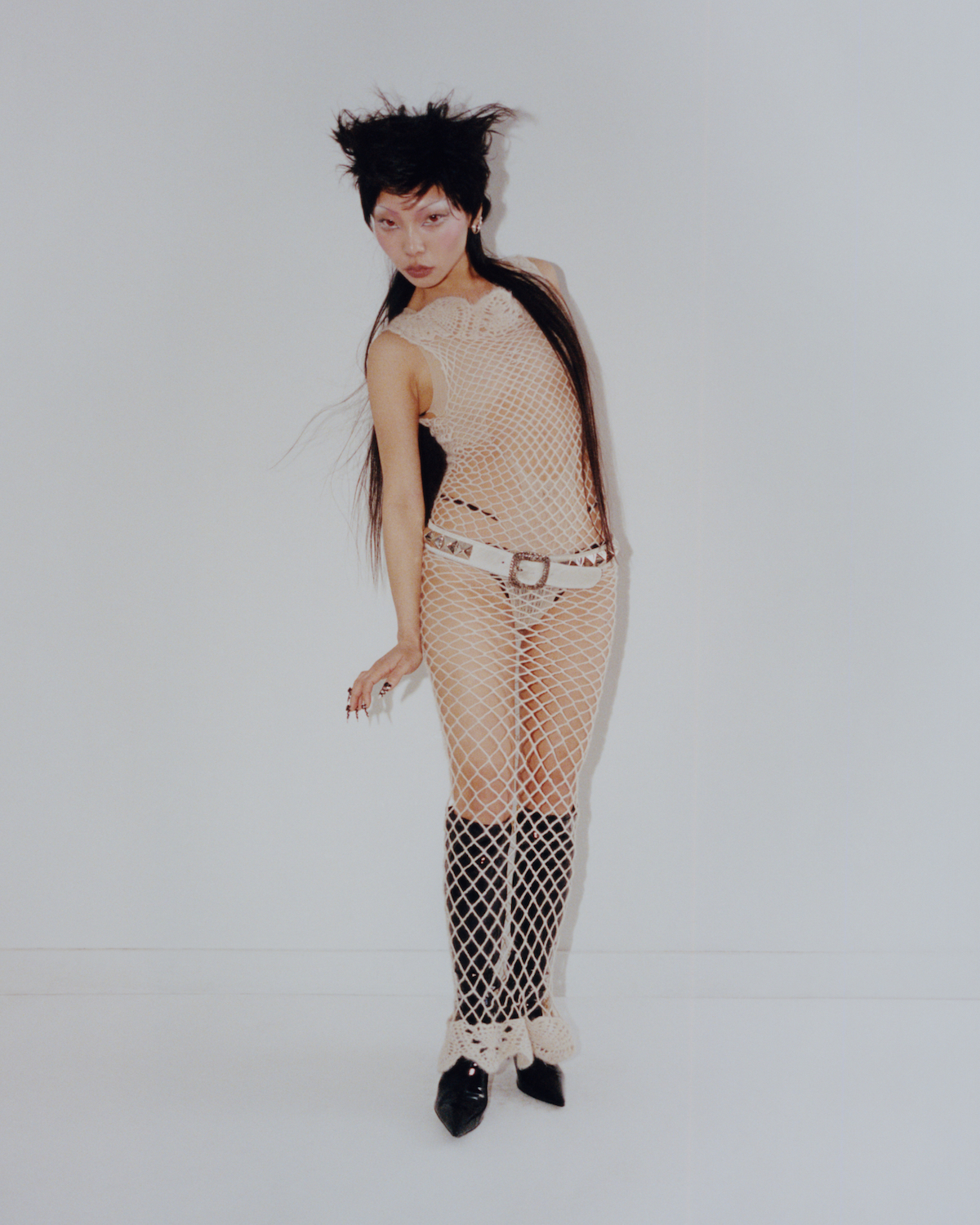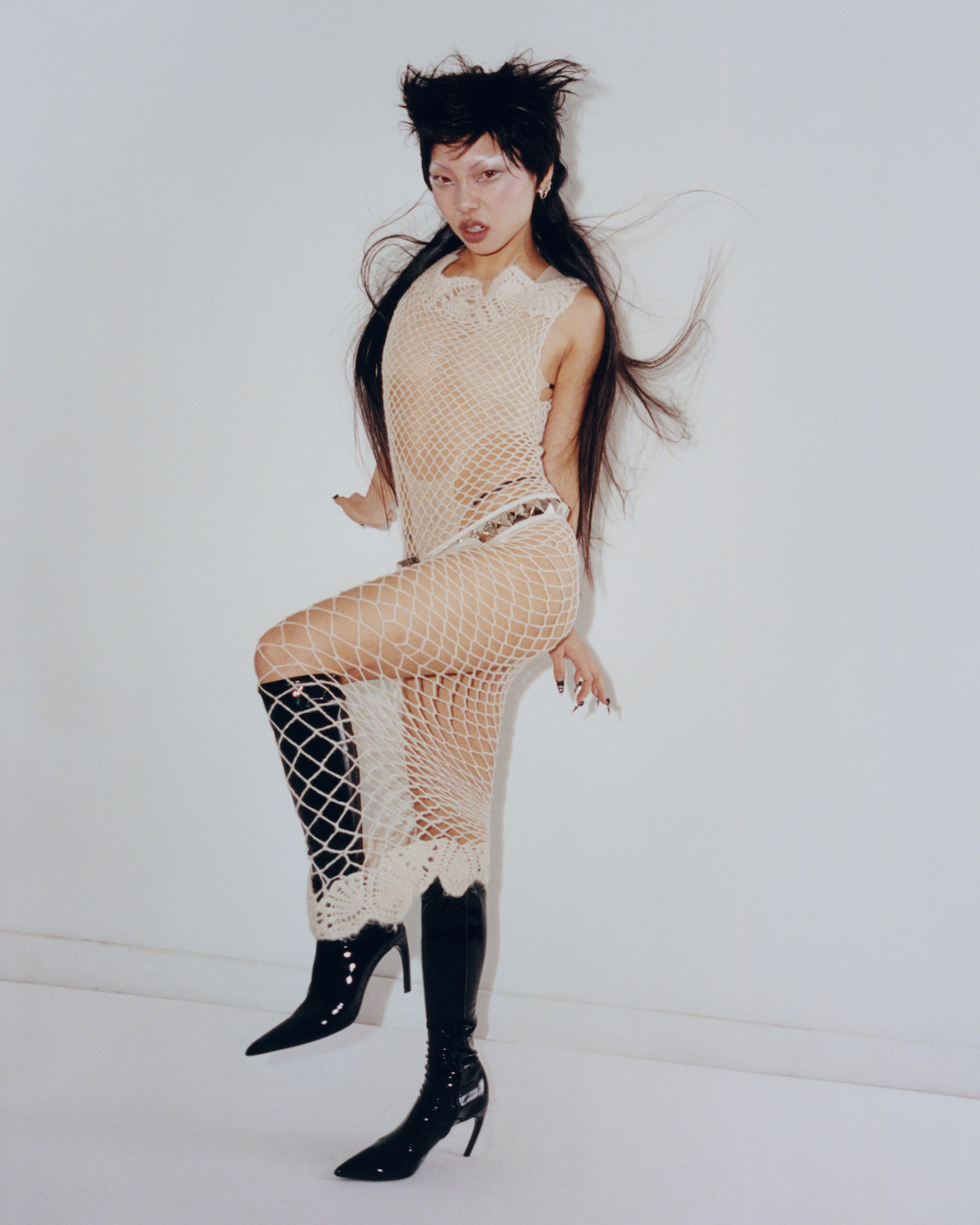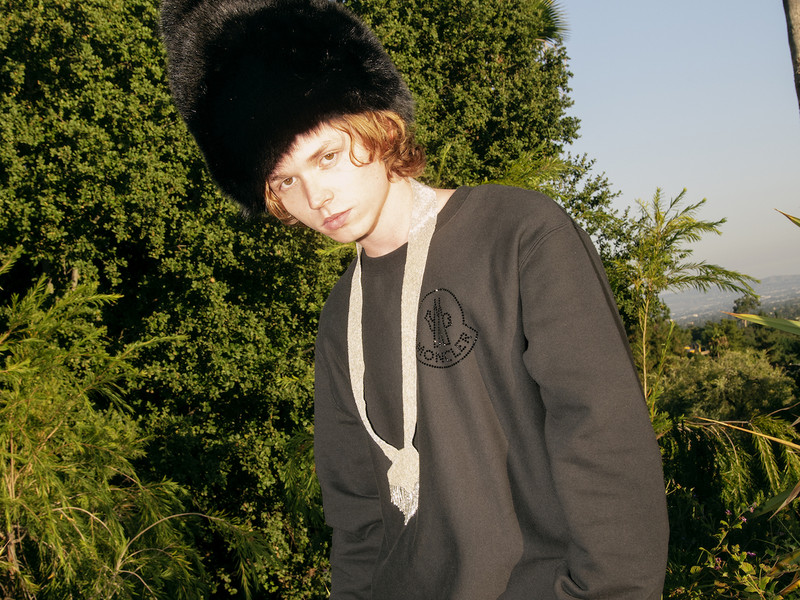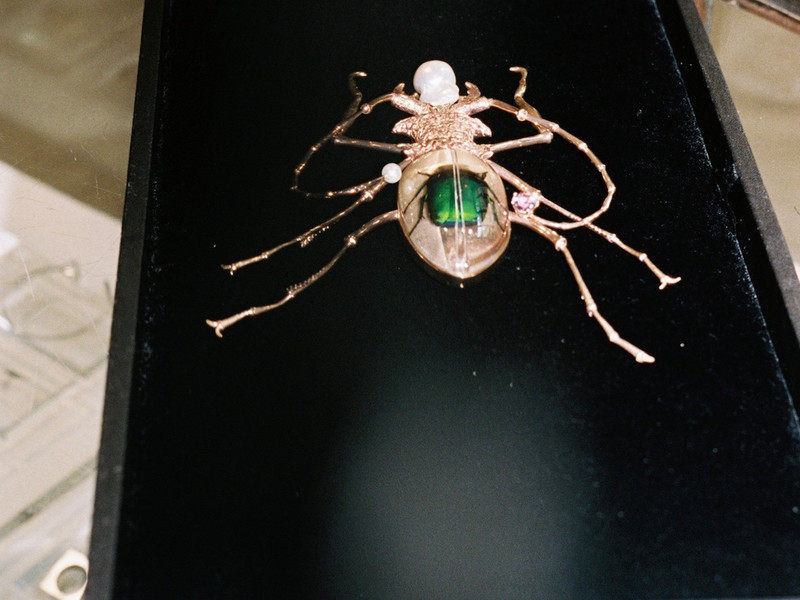Family Affair
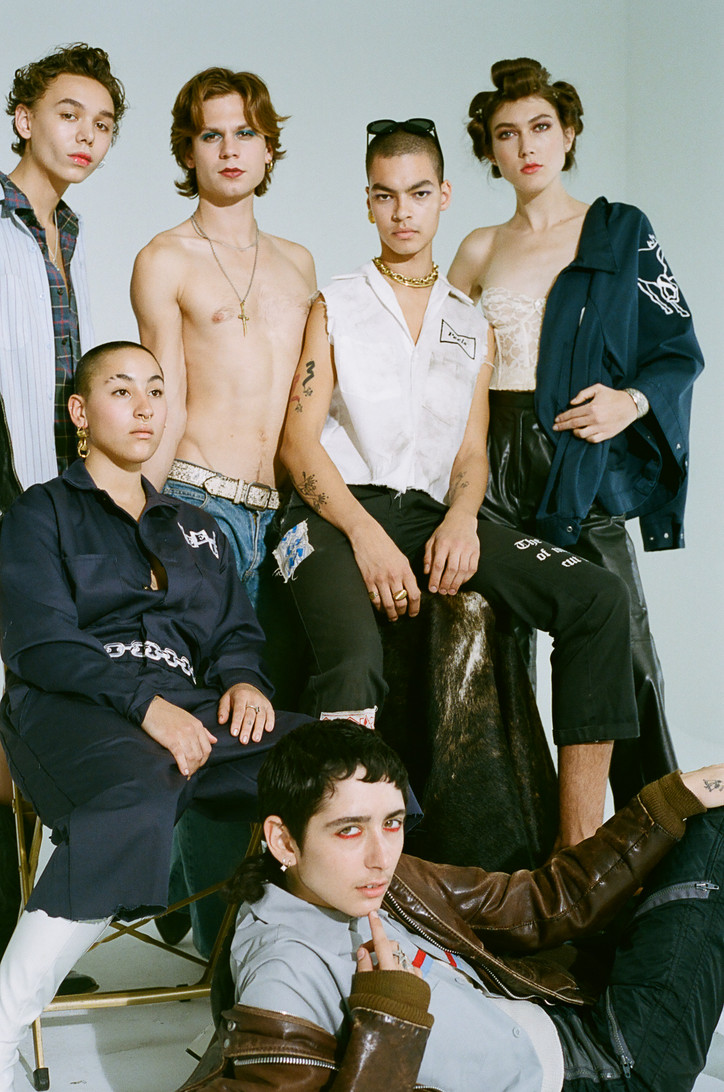
He bought it, sewed it onto a mechanic’s work shirt and became obsessed with the personal, DIY feel. “I just loved having a one-off thing,” he said. From there, he thrifted shirts from a few other companies, before realizing he could just redesign his dad’s button-up work shirt, which was way cooler, because of the sentiment behind it. “Every summer throughout middle school I’d paint with him because my family wasn’t going to send me to camp,” he remembered. “So, I’d go to work with him and he loved me being there so much.”
Though he was happy with how the shirt turned out, he didn’t intend for that original design to evolve into a brand. But his friends started asking for shirts—then his followers did. Eventually, he had to make an Instagram page for Peels just to keep up with demand. “I never wanted to be official, I just wanted it to be through DM for friends or family,” he explained. “But I had to make a website because I wasn’t getting paid—I was losing too much money.”
Three years in, Peel now runs from a studio on Canal Street, doing all the embroidery in-house. As a designer, he’s decidedly reluctant to take risks on new garments or let the brand grow too much too fast. But that’s not to say he doesn’t believe in his success—or his garments—or that launching Peels didn’t require a few leaps of faith, in the first place. In 2016, the day a New York Times interview about the label dropped, Peel walked out on his barista job. “I wasn’t ready to quit, but I was so amped that day that I was just like, ‘Yo fuck you I’m out,’” he laughed. “The next day, when things started to chill out I thought, ‘Oh shit I still need that job.’” But clearly, he’s figured it out.
Earlier this month, the designer sat down with office to tell us about the brand and the future of Peels. Read the interview and peep some exclusive photos featuring the models from New Pandemics, below.
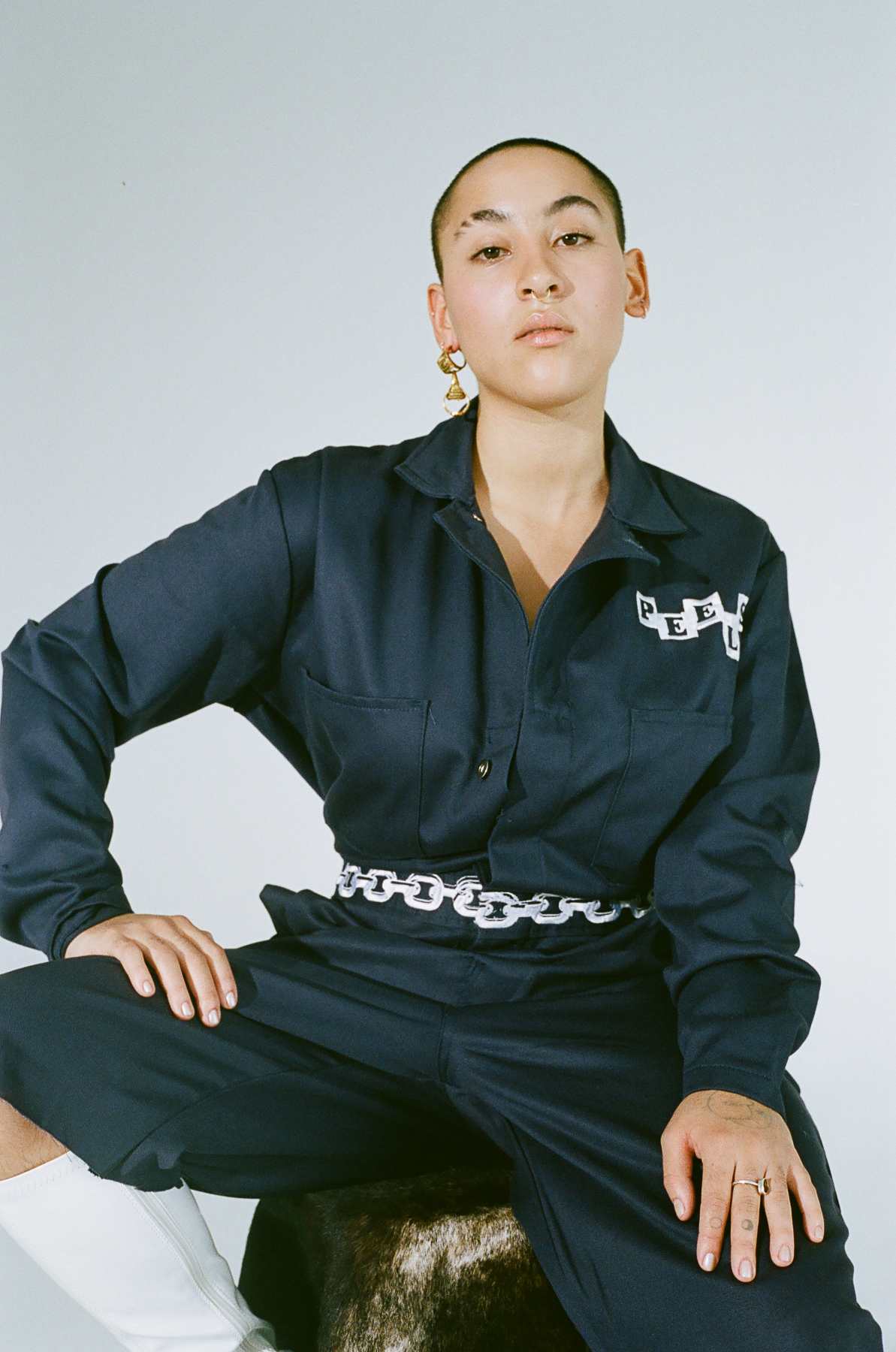
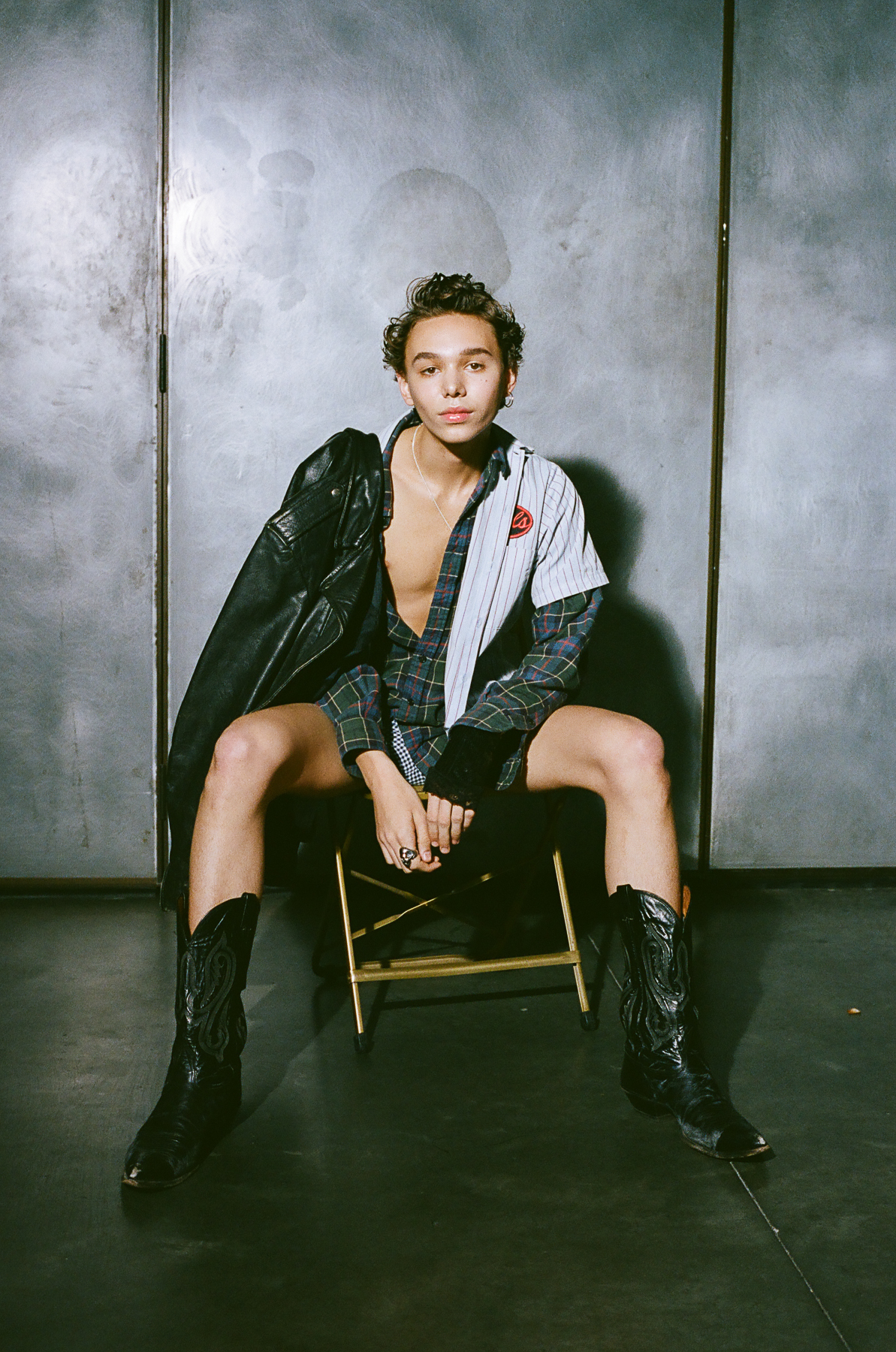
Tell me about this shoot you did with New Pandemics.
This shoot was a step I wanted to take for awhile but was waiting, because I knew it was gonna be interesting. I wanted to design more fashiony stuff. I’ve been posting these pretty Instagram girls for the past two years and built a lot of [the brand] on very typical, amazing, stunning models. But the following got so used to perfect girls, and I was getting ready to do a shoot with New Pandemics, where these individuals are so different. Not everyone has that blonde-hair-blue-eyes look, or even the typical thing that people expect of a model. It was weird to make that transition to what I think is cool. I’ve had so much influence from the people around me—people being like, ‘Do this, shoot this girl.’ I tried that for a year and I wasn’t happy with what was happening. With New Pandemics, it’s a step toward me doing what I like.
So, initially you didn’t want to dress perfect Instagram models?
I started [the brand] with skaters, and now if you look, it’s gone back to skaters within the last two months. I’ve used a bunch of [photographers] with followings, which I figured would be good for the brand. But after three years, I just decided to go back to my roots. I used one of my best friends, Matheus, who shot the earliest stuff for Peels—he shot the whole thing, using my camera.
Who’s your favorite person that’s modeled your clothes?
We did a shoot with Bill Murray—I sent him my favorite, broken-in navy blue shirt and a new version of it. He ended up wearing the old one. With someone that cool, I just wanted him to keep it. But they sent the shirt back for some reason, and I kept the ‘Bill’ patch on it. People are like, ‘Who’s Bill?’ And I’m like, ‘I don’t know man.’ But it’s such a good feeling knowing he wore it. So, Bill Murray was really cool, and Lady Gaga was probably my favorite—she doesn’t give a fuck. She’s so wild.
How did you get into fashion?
From when I was so young— maybe even first grade— I was so particular about what I wore. My mom would have to bring me to a skate shop and they didn’t even have clothes in my size. There were no skate shoes for a kid that small. Even at that age, my mom was driving me around to different places, sometimes for an hour in the car, while I was looking through the Yellow Pages calling stores asking if they had a certain shoe.
How did Peels come about?
For a while, I haven’t really wanted to explain [the background], so I’ve just said I was really fortunate and lucky. But I’ve been hustling, trying to come up with something strong enough to start and catch people’s eyes for a while. It was just having something personalized. I dug through one of those baskets at a vintage store with tons of patches and found a ‘Jerome’ patch, and I was obsessed with it—I just loved having a one-off thing. I got another shirt that was from some mechanic and over time a lot of people were just like, ‘You’re wearing a work shirt with your name on it and you’re not coming from work, what?’ They were confused but I thought it was funny and personal. So, I was wearing shirts that were random companies and then I realized I can just wear a shirt that’s from my dad’s company, because he’s a painter. And I can put ‘Peels Painting’ on the side and his name on the other side, and that’d be so sick. I made one for me and one for him.
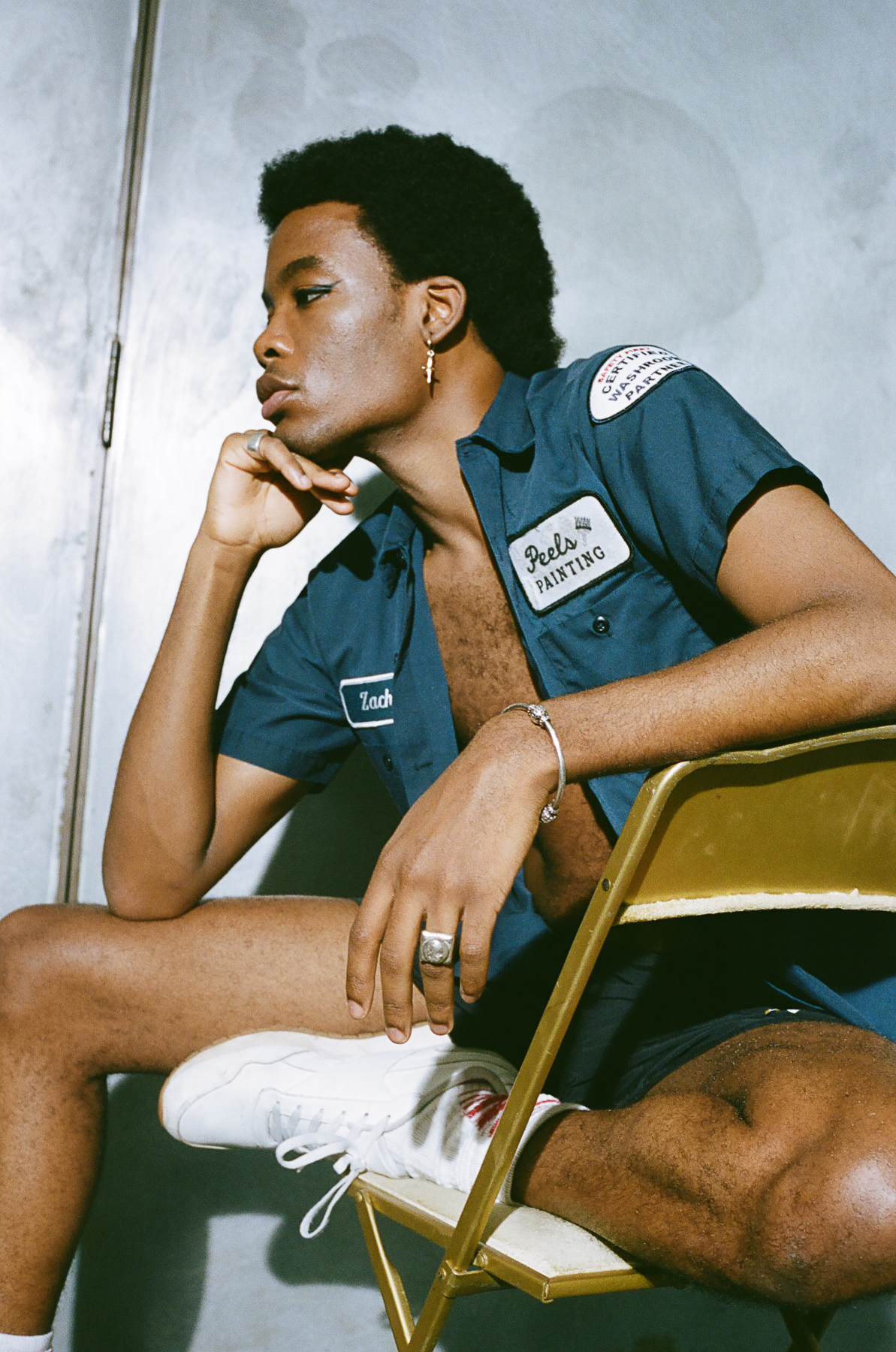
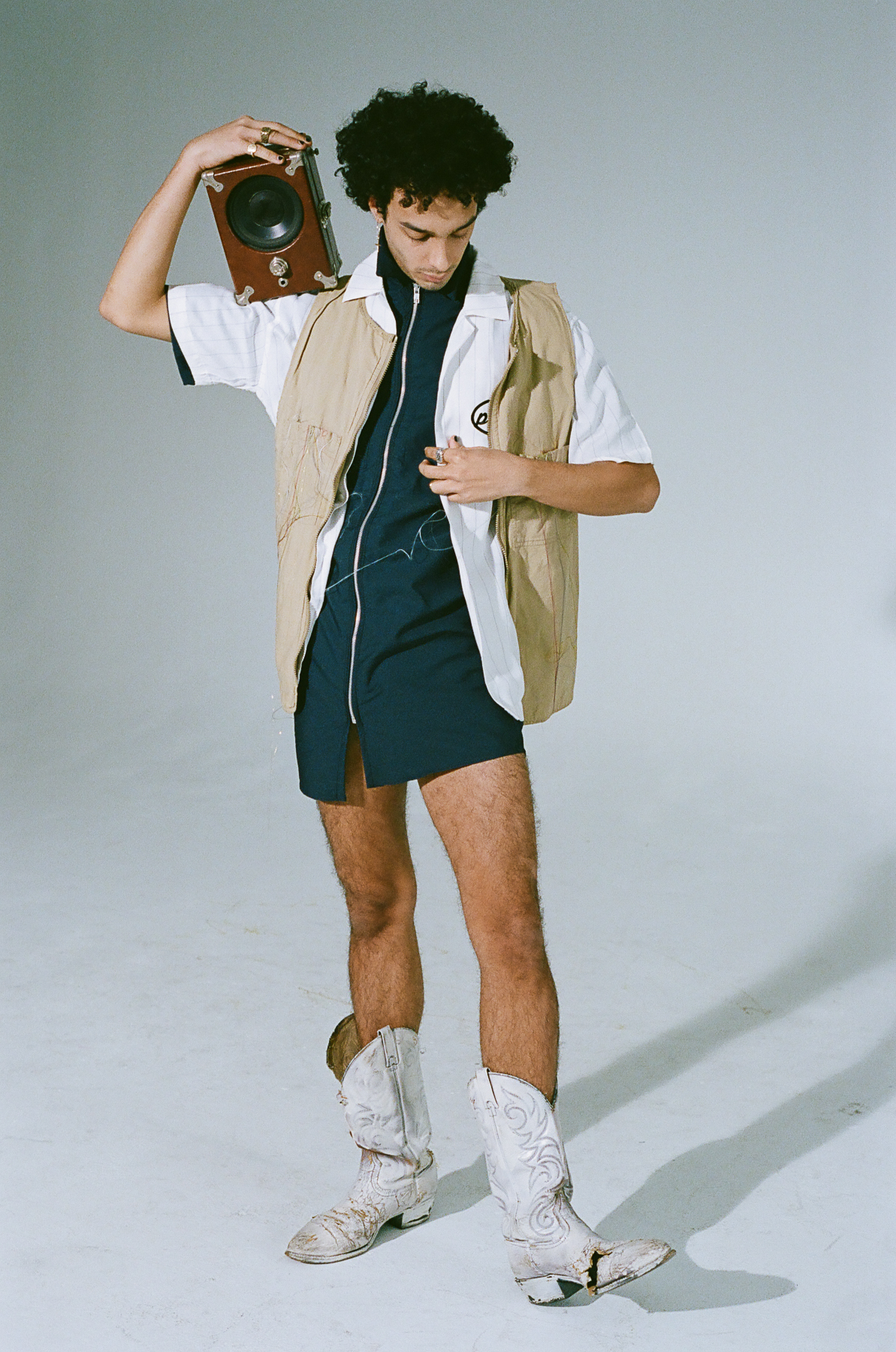
Do you have any memories from when you were a kid of your dad painting?
Every summer throughout middle school I’d paint with him because my family wasn’t going to send me to camp. So, I’d go to work with him and he loved me being there so much. I’d try to paint, I’d always mess stuff up, dripping paint everywhere, and the whole day he’d spend cleaning up behind me. He was also paying me, but we just loved hanging out, and we both looked forward to the summers. We’d just be laughing around people’s houses all day. They’d have a pool and I’d go swimming. He’s just a super happy-go-lucky type of guy.
What’d the first Peels shirts look like?
Before there was ever the paintbrush patch, it was a car auto body patch that I just found. It wasn’t until it said ‘Peels Painting’ that I was posting it on my personal Instagram and people were like, ‘I want one of these.’ I had a place in LA embroidering the patches, another place embroidering the names—it was like a 14-day process. Then, I’d take all three pieces to this Lower East Side seamstress to get it put together on for $20. I was already like $60 in by this point [on each shirt]. Then I’d take it to the person buying it and be like, ‘Just give me 20 bucks.’ There’d be so many instances where people would be like, ‘I asked for that like a month ago and I never got it and now I don’t have money.’ And I’d tell them to just take it. I never wanted to be official, I just wanted it to be through DM for friends or family. I had to just make a website because I wasn’t getting paid—I was losing too much money. Some people look at the brand as a whole and think it happened overnight, but for me it wasn’t overnight at all.
How did you end up in New York?
I always looked up to my sister and at some point in her life, she came here and fell in love with New York. Then I visited her. Where I grew up, it was so stagnant. I went to Jupiter High where it was like, 30,000 white kids. There was no ethnicity or difference and everybody fought to look the same. I was wearing tight pants and a striped shirt like Dustin Dolan or something, one of those skaters, and people thought me and my friends were so weird. The basketball players and the football players were popular, wearing Abercrombie polos and Hollister ripped jeans. And I was like, ‘Oh I can get girls if I dress like that probably, but that would suck.’ I had to get the fuck out of there. So, right when I graduated, I wanted to move somewhere else.
What’d you do for a living while you were building Peels?
I always struggled until two years ago, when I was like, living on soup. Now, I’m finally able to go to dinner once in a while. I was a barista—I actually miss it sometimes. I did that until the day the New York Times interview came out. I wasn’t ready to quit, but I was so amped that day that I was just like, ‘Yo fuck you I’m out.’ The next day, when things started to chill out I though, ‘Oh shit I still need that job. Peels is not ready to be my only thing.’ But I didn’t go back. I also still DJ a serious gig once a week at The Blond.
Who’s your ideal Peels customer?
There are only people I don’t want to wear it—close-minded people. I never want to see my clothes on somebody that’s sexist or racist—that’s my nightmare. I want to keep it for everyone else, though. I don’t want someone to wear a Peels shirt and someone else be like, ‘Oh you don’t skate.’ Or like Thrasher—you can’t wear Thrasher if you don’t skate or whatever. That’s just so lame to me. If you like a brand, wear it. I want people to feel like themselves in my clothes.
What’s your vision for the future of Peels?
I like keeping it small and containable—I’ve always said the same thing: I’m not trying to ever get rich. I don’t want it to become overwhelming or have a big team. I just like to live, I like my freedom—I want to be myself.
